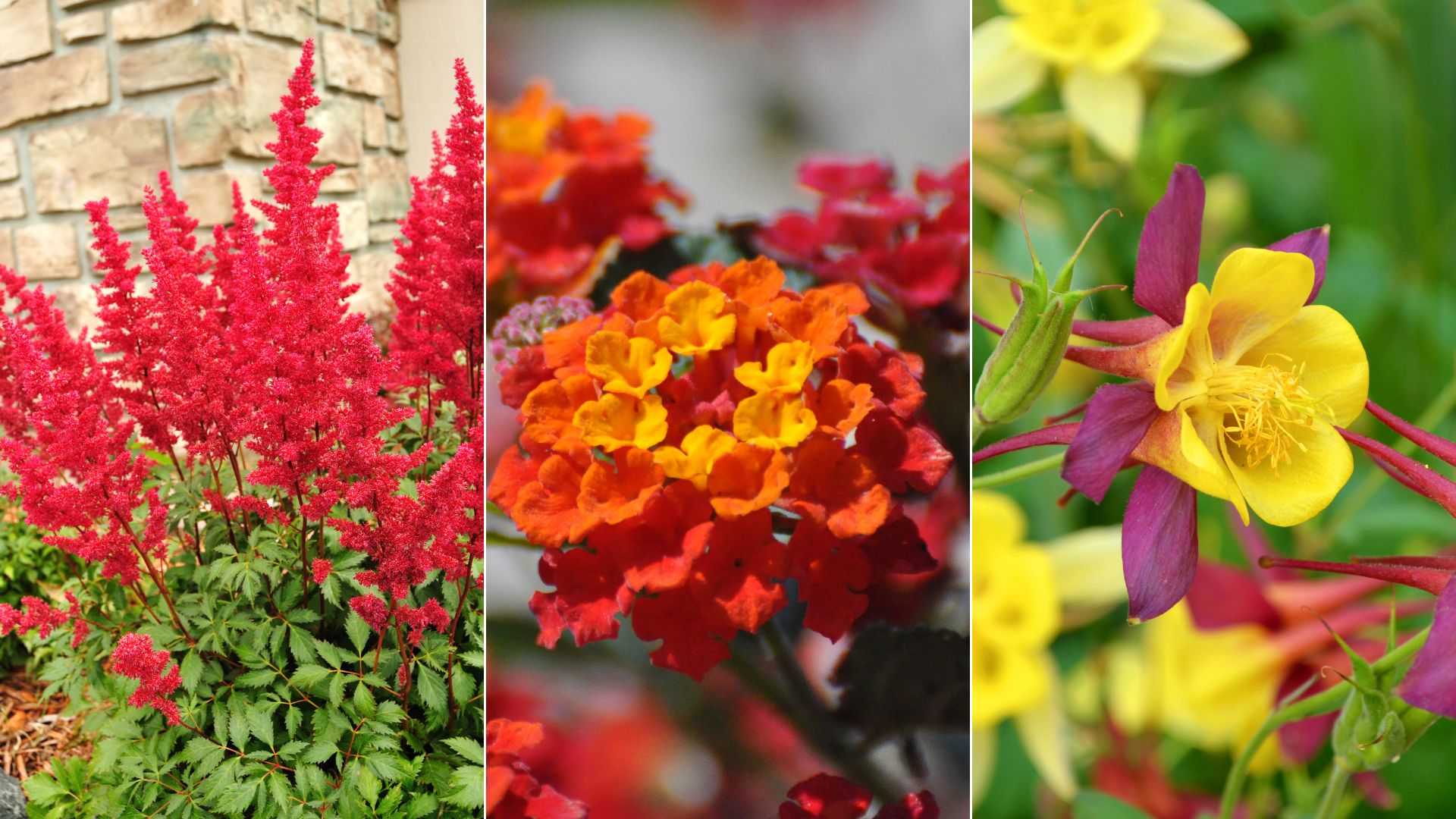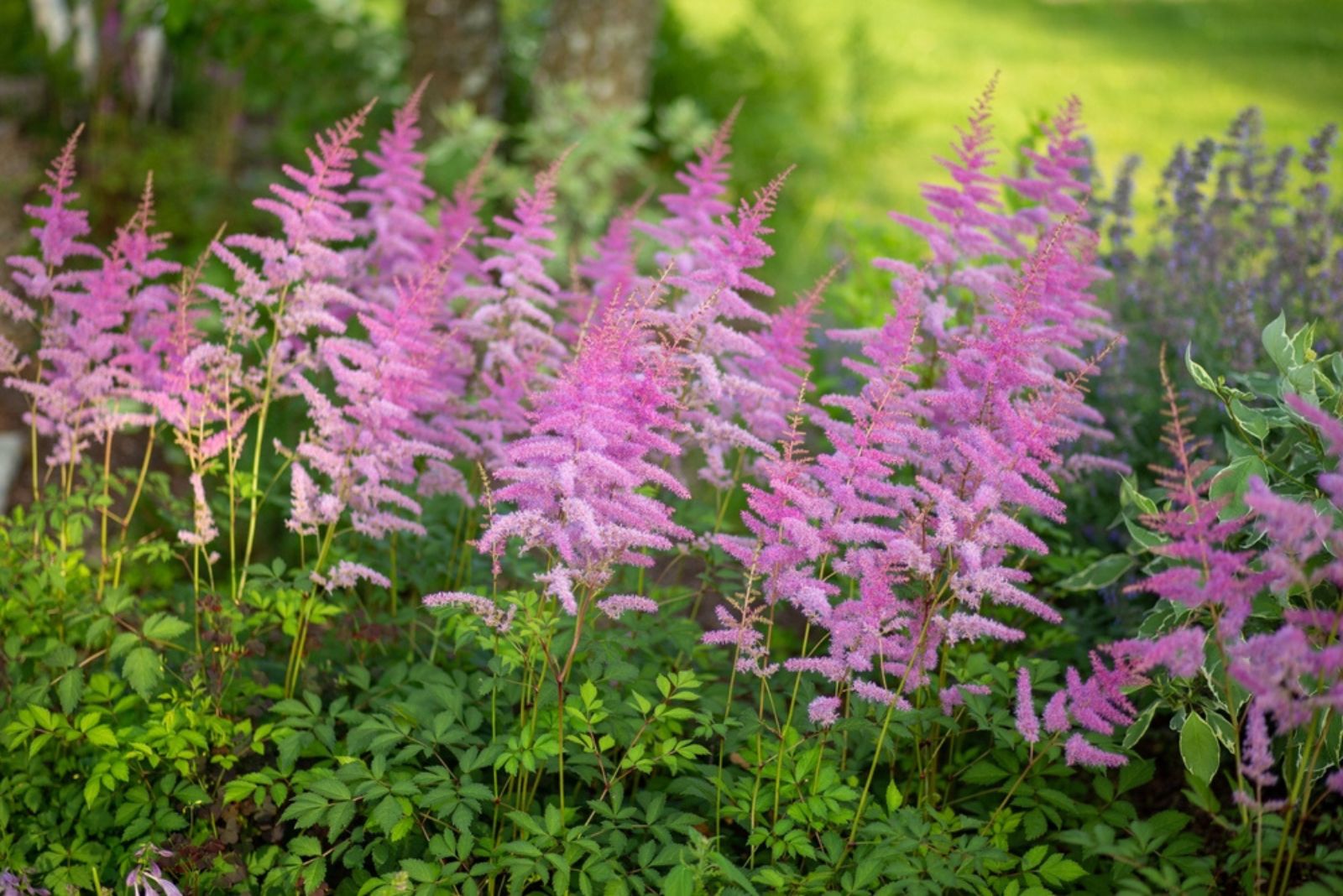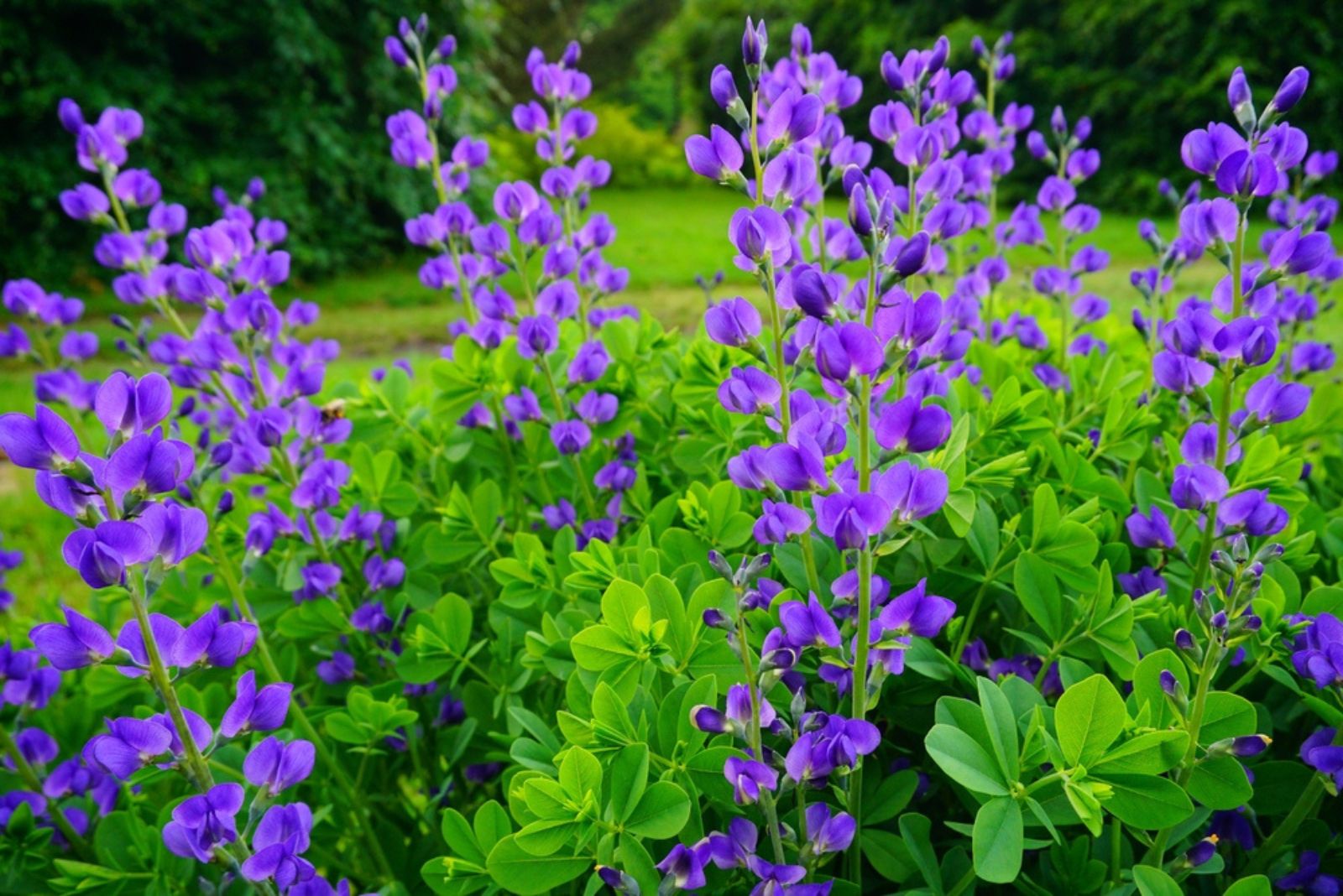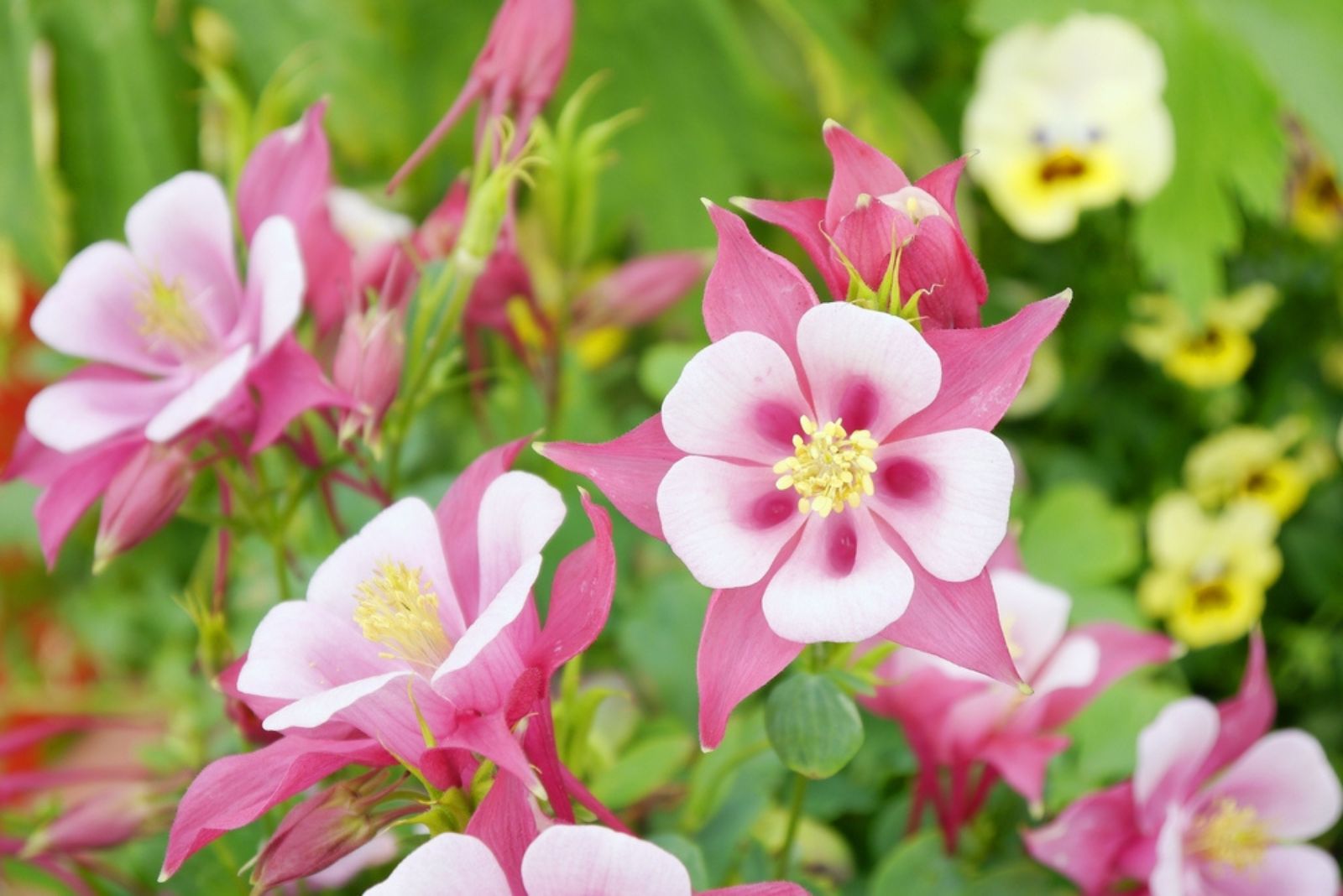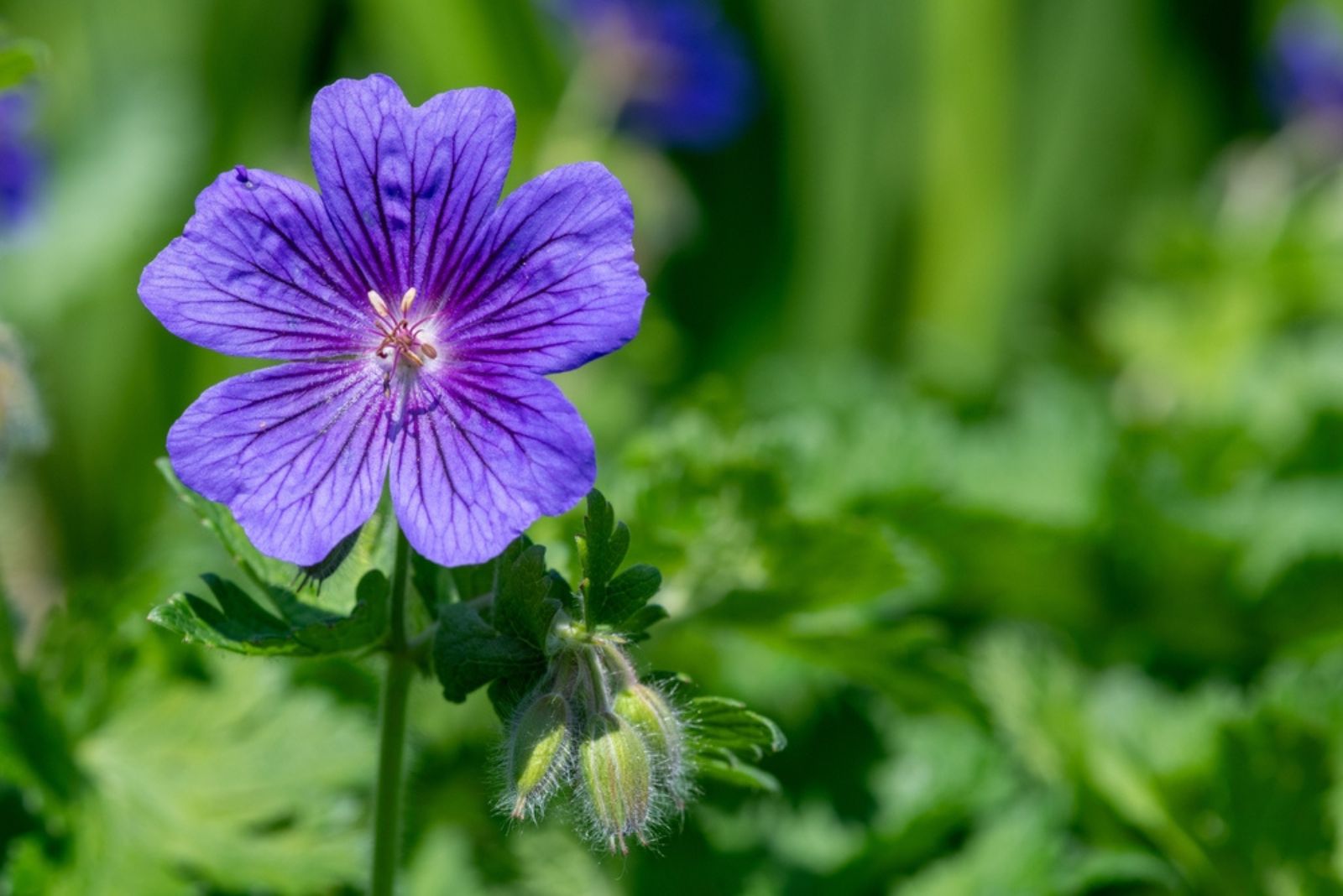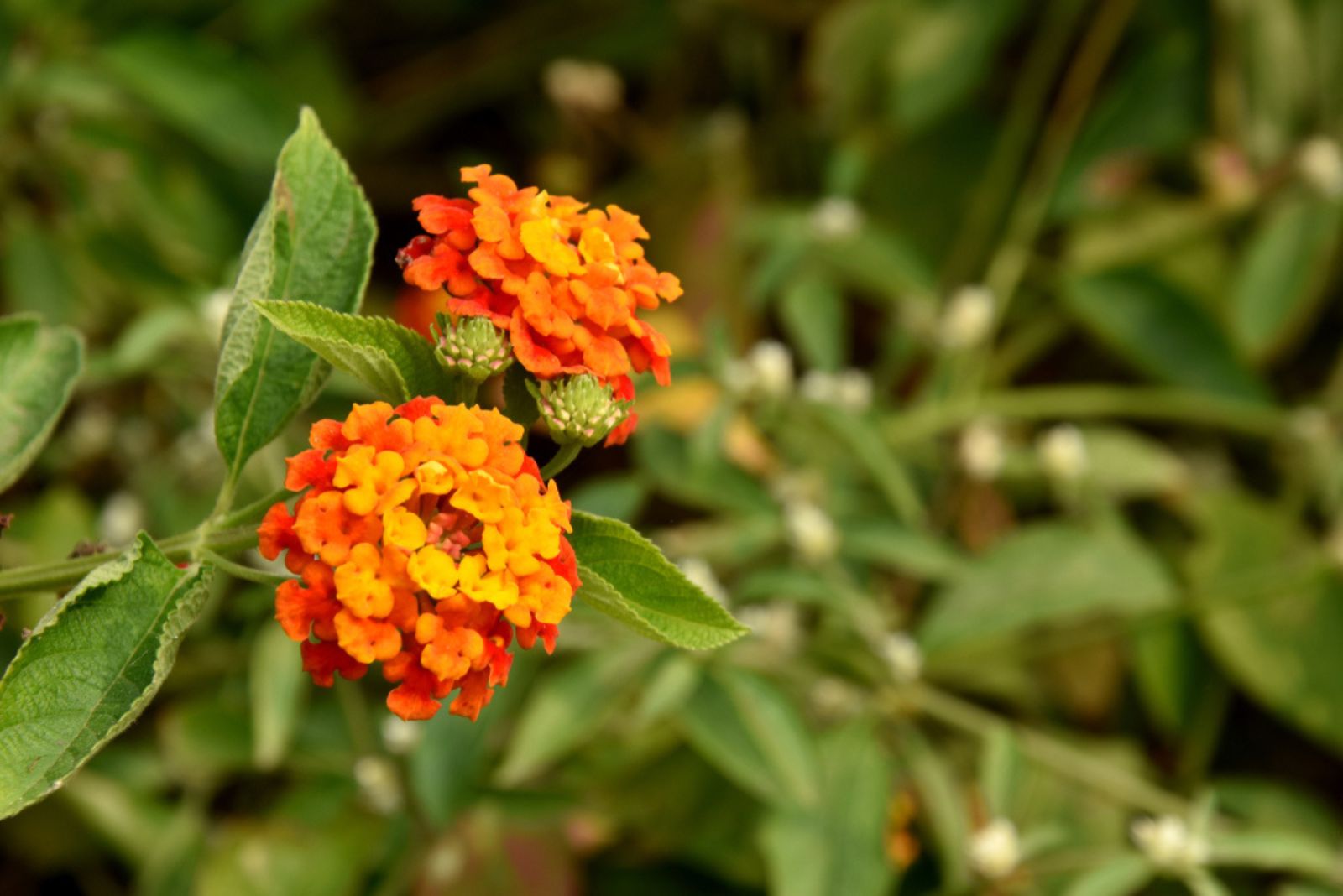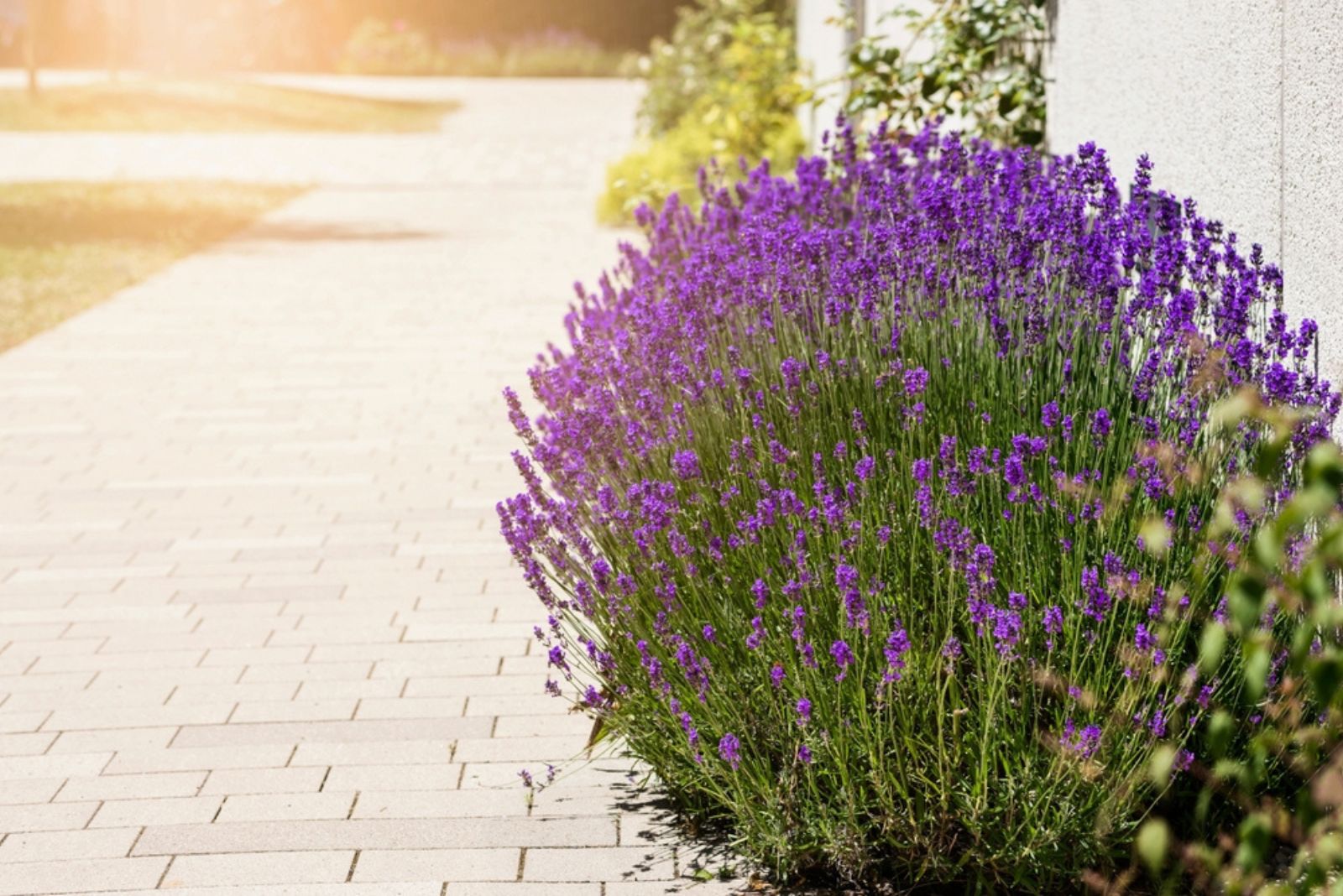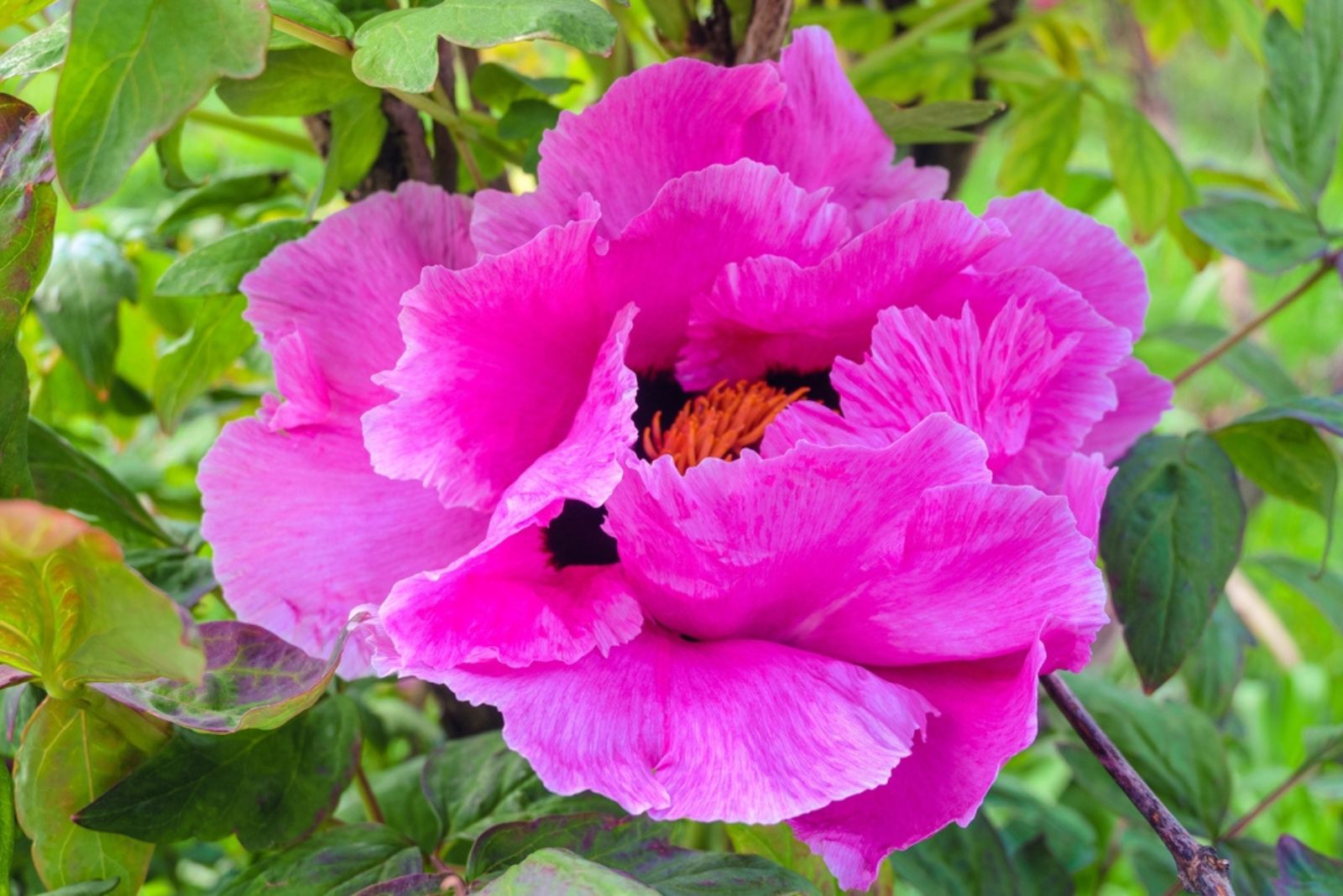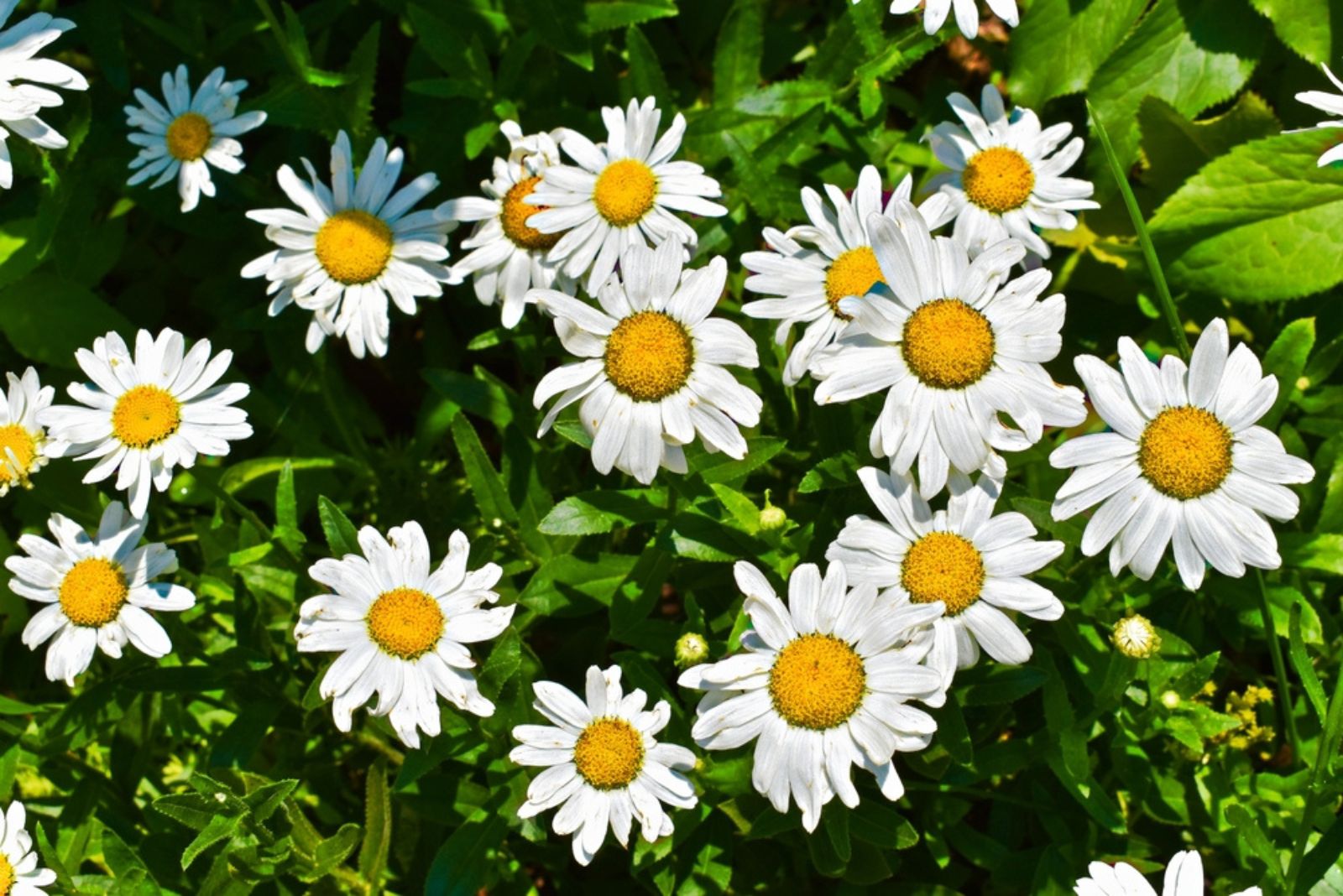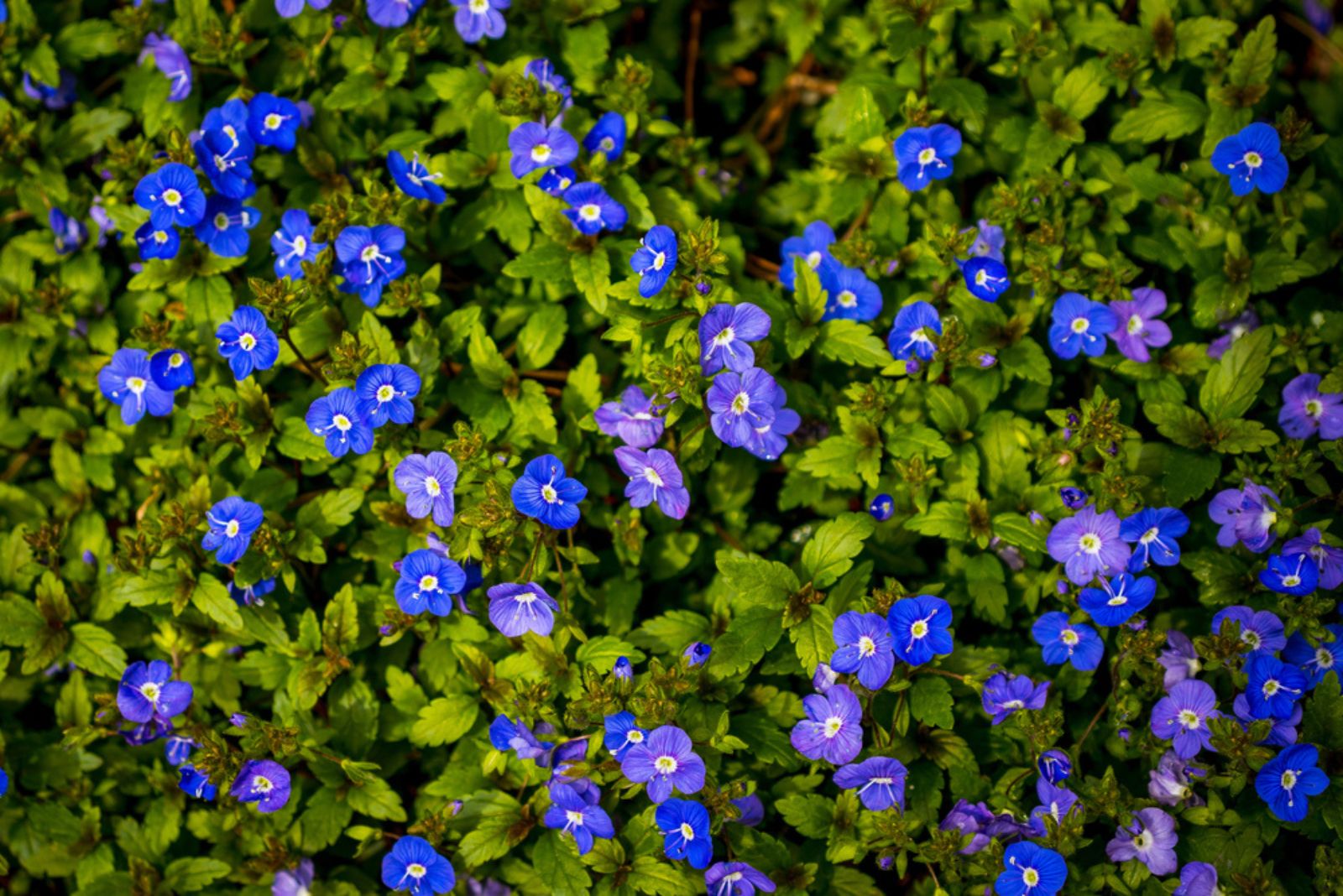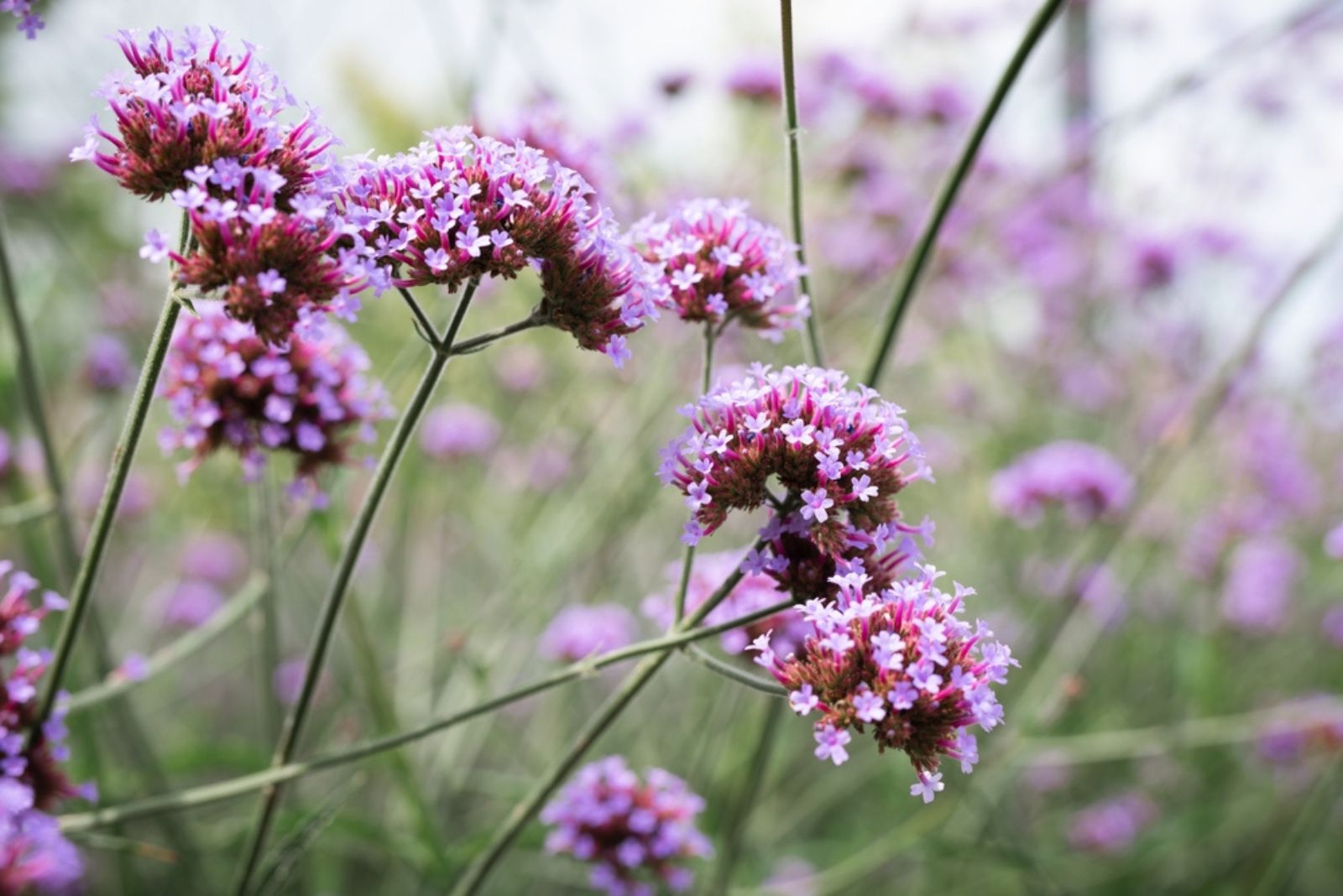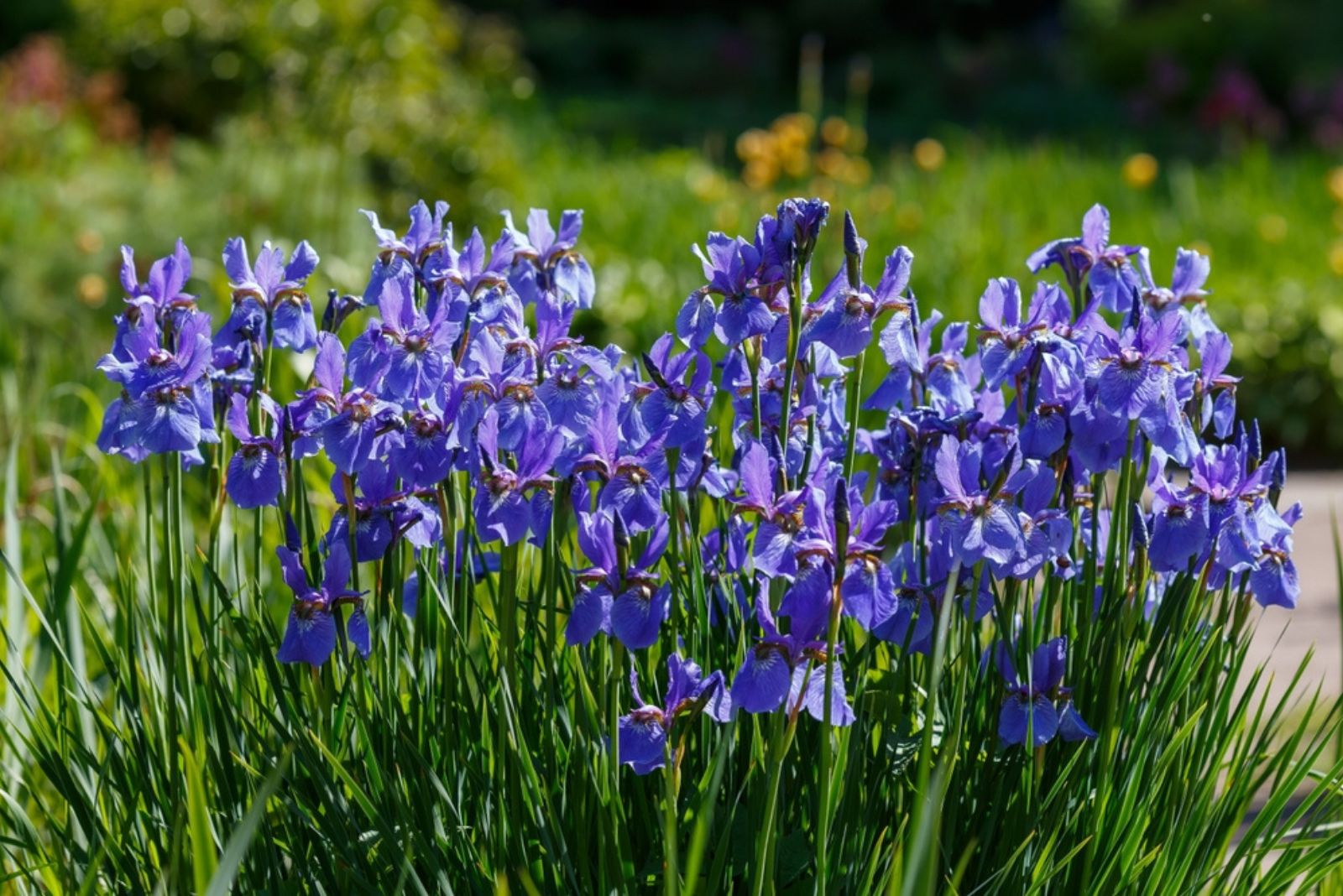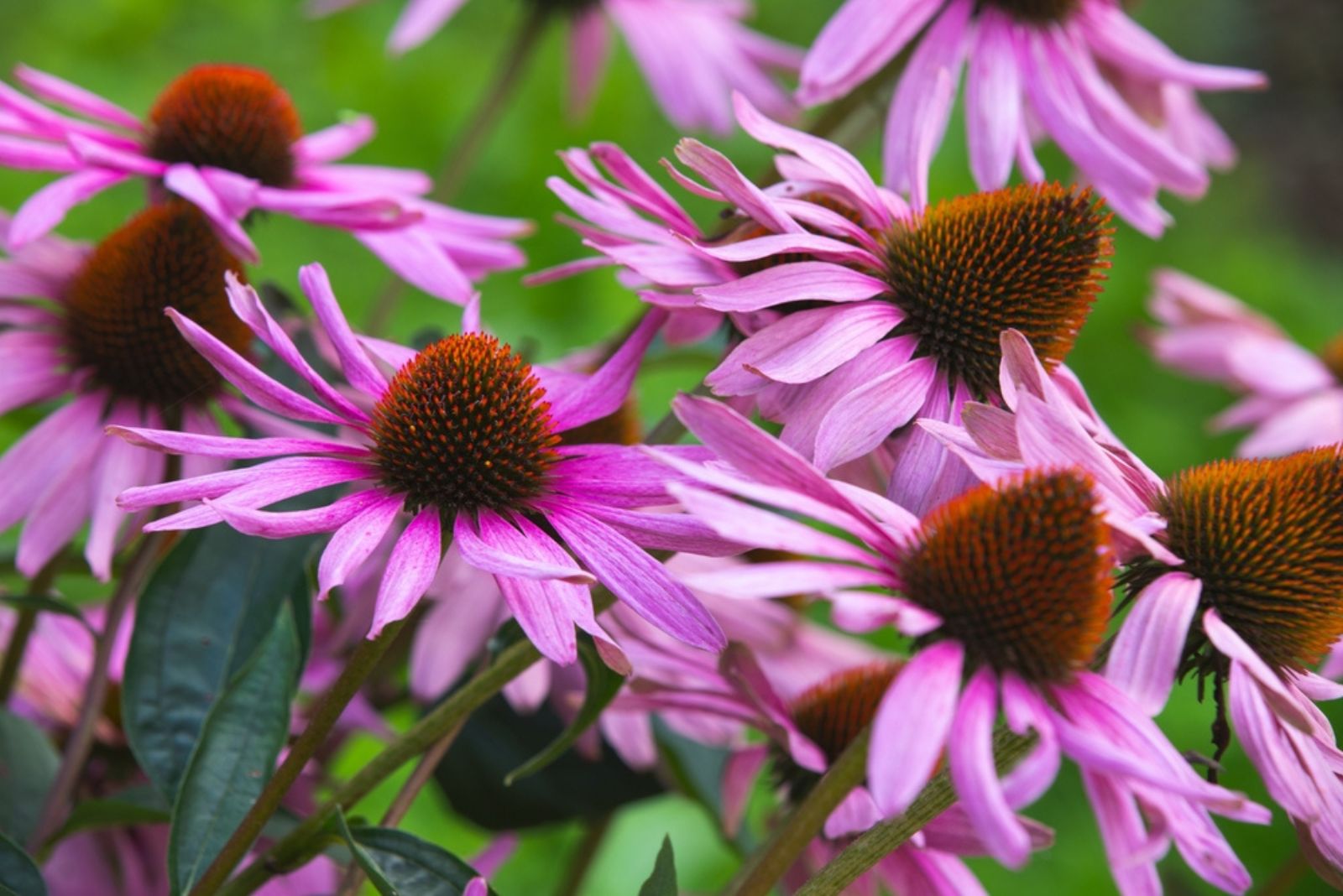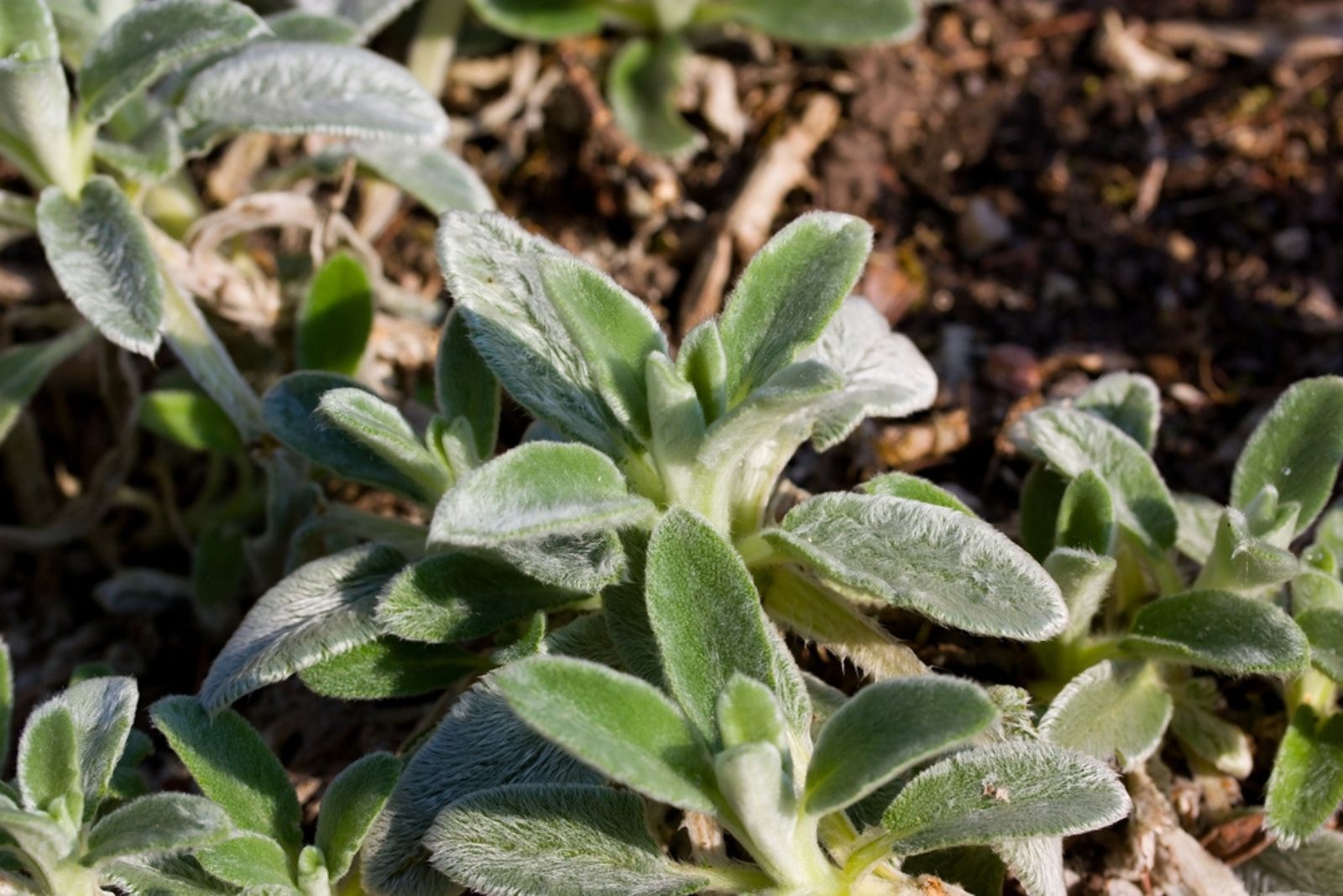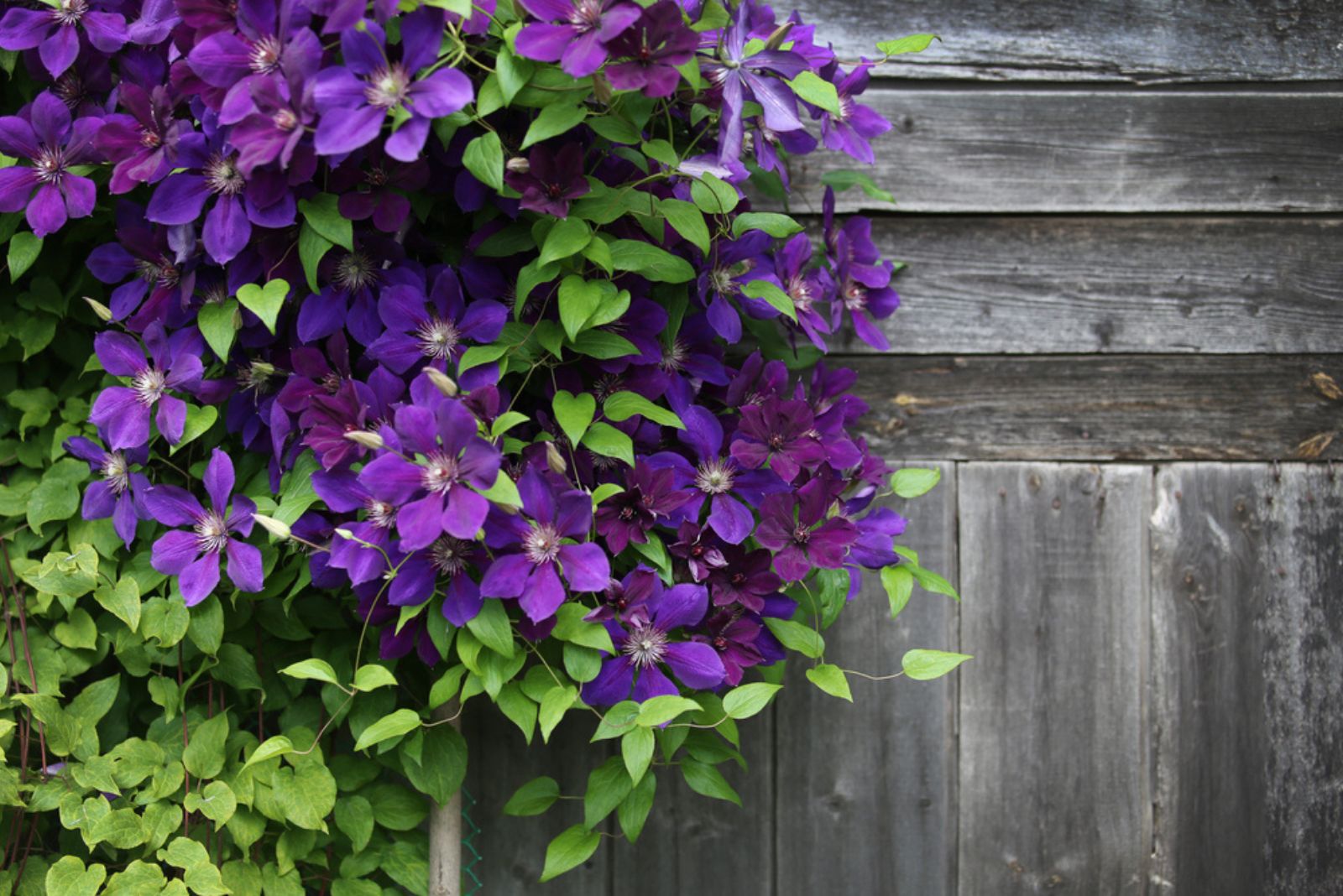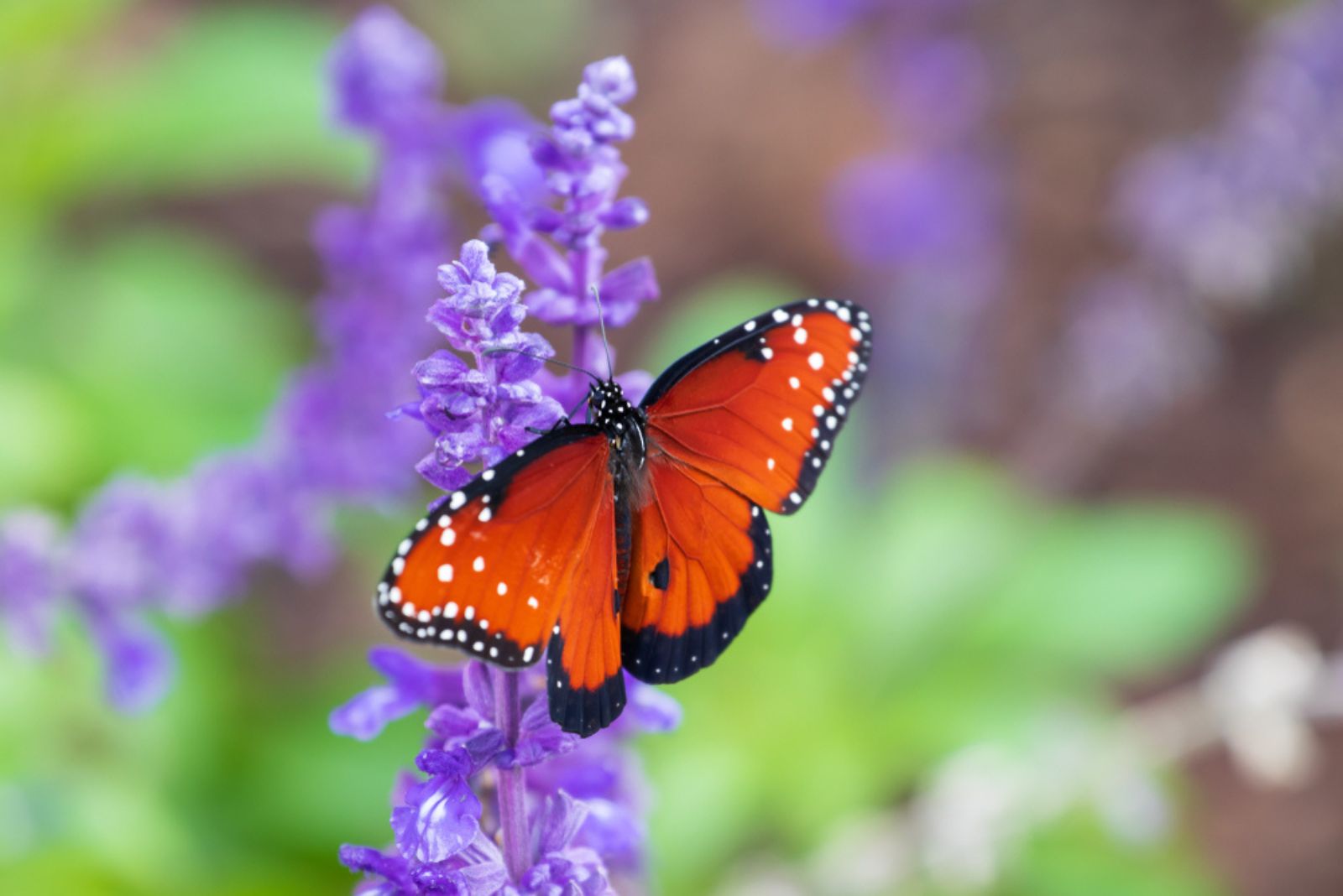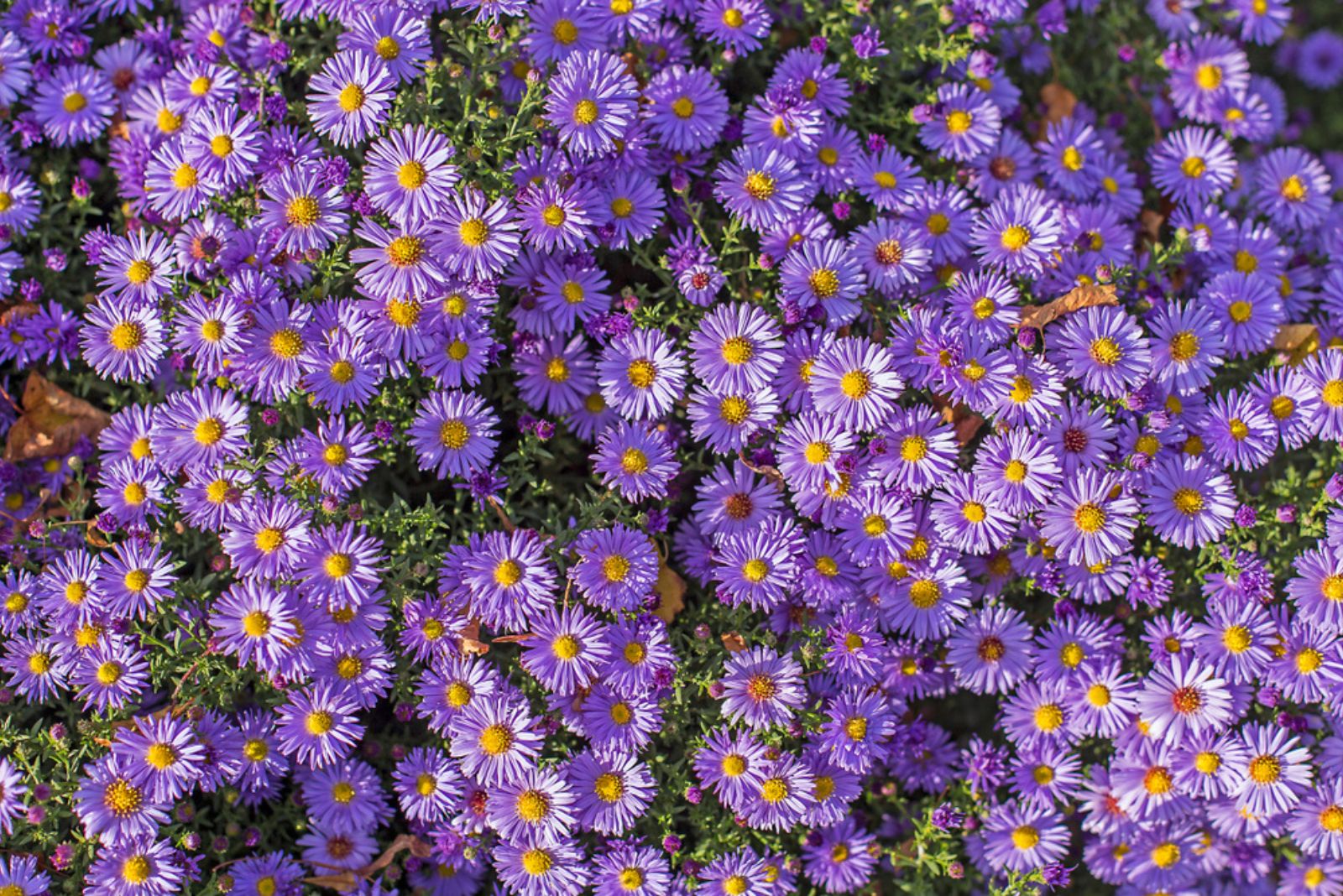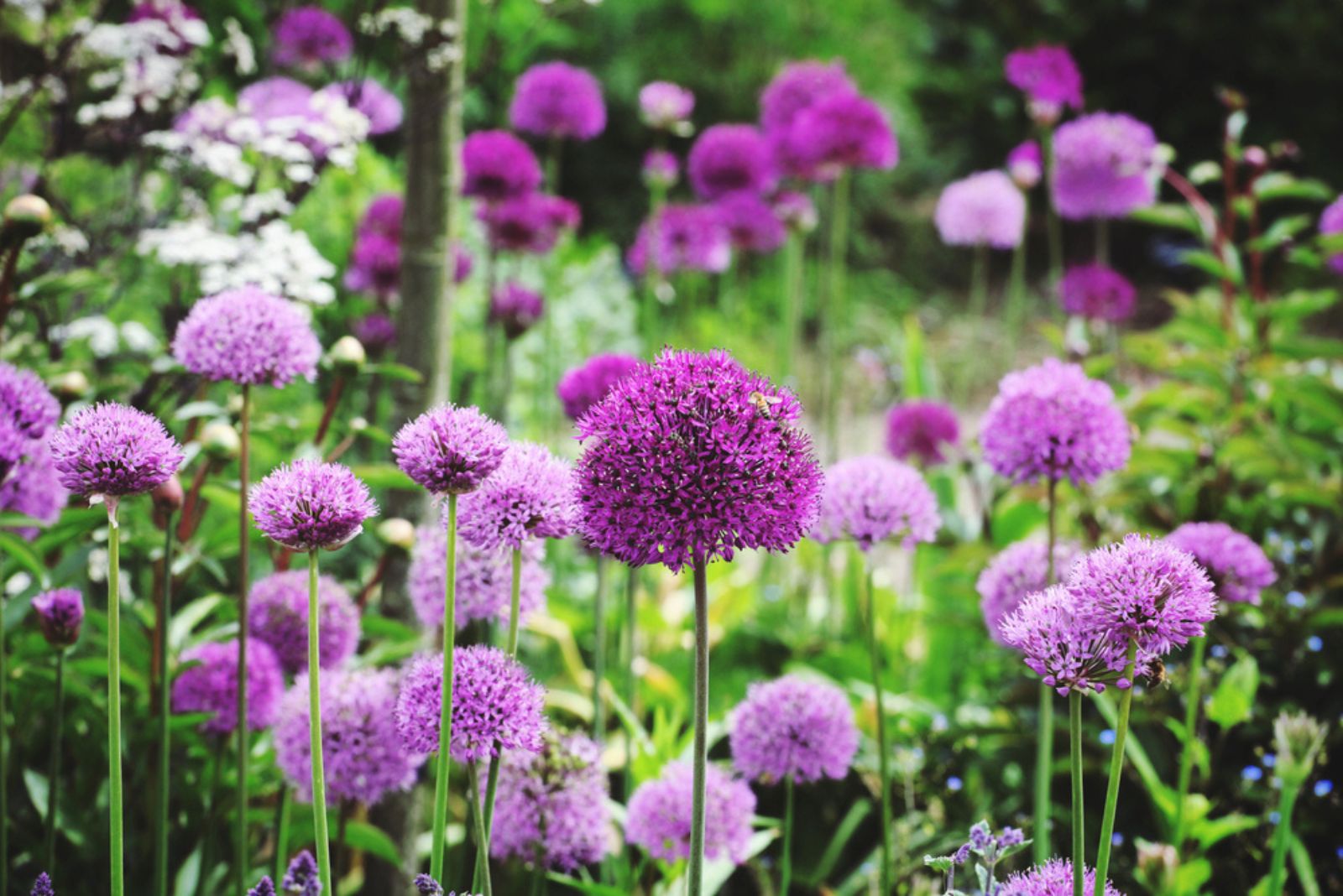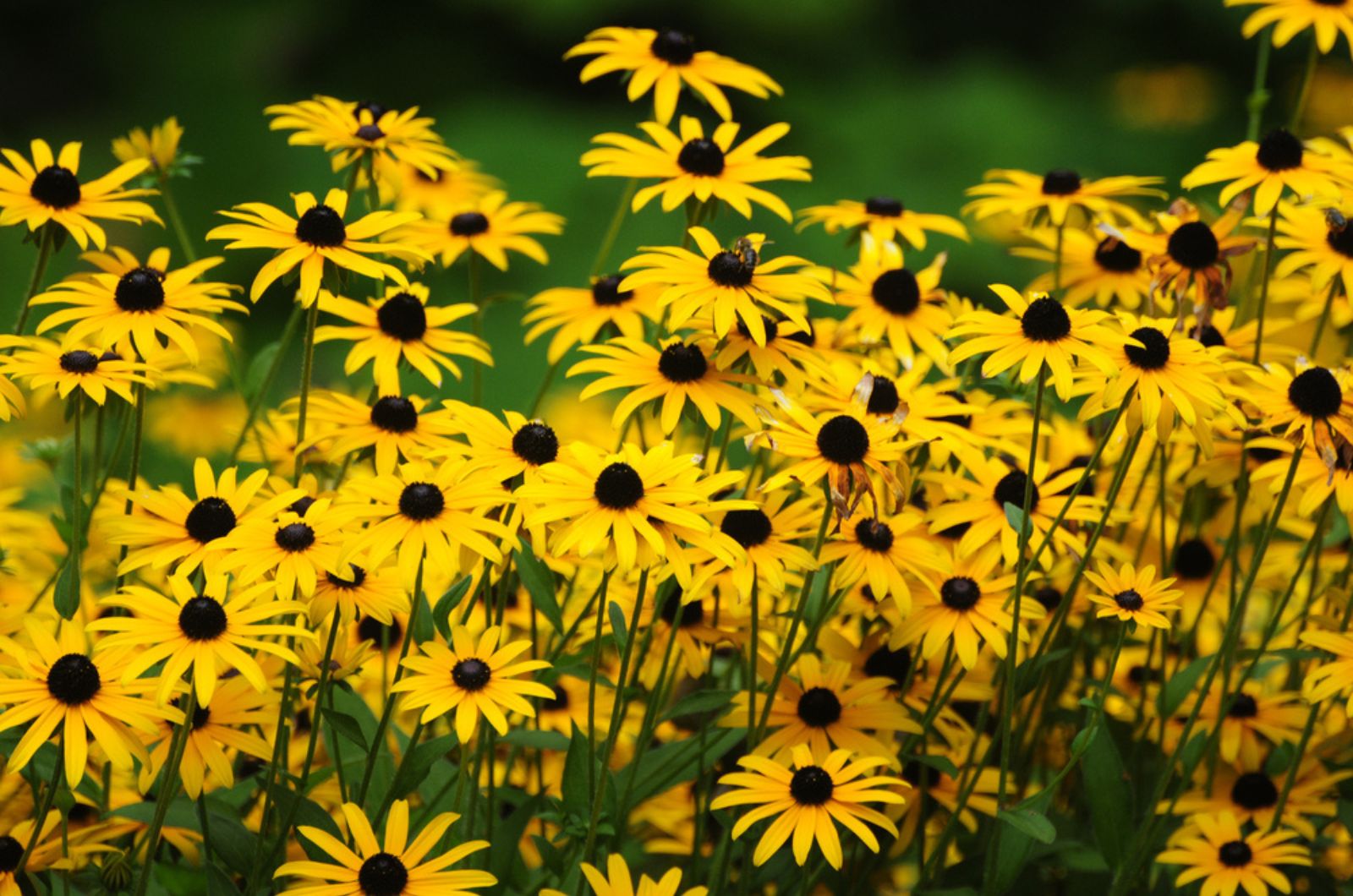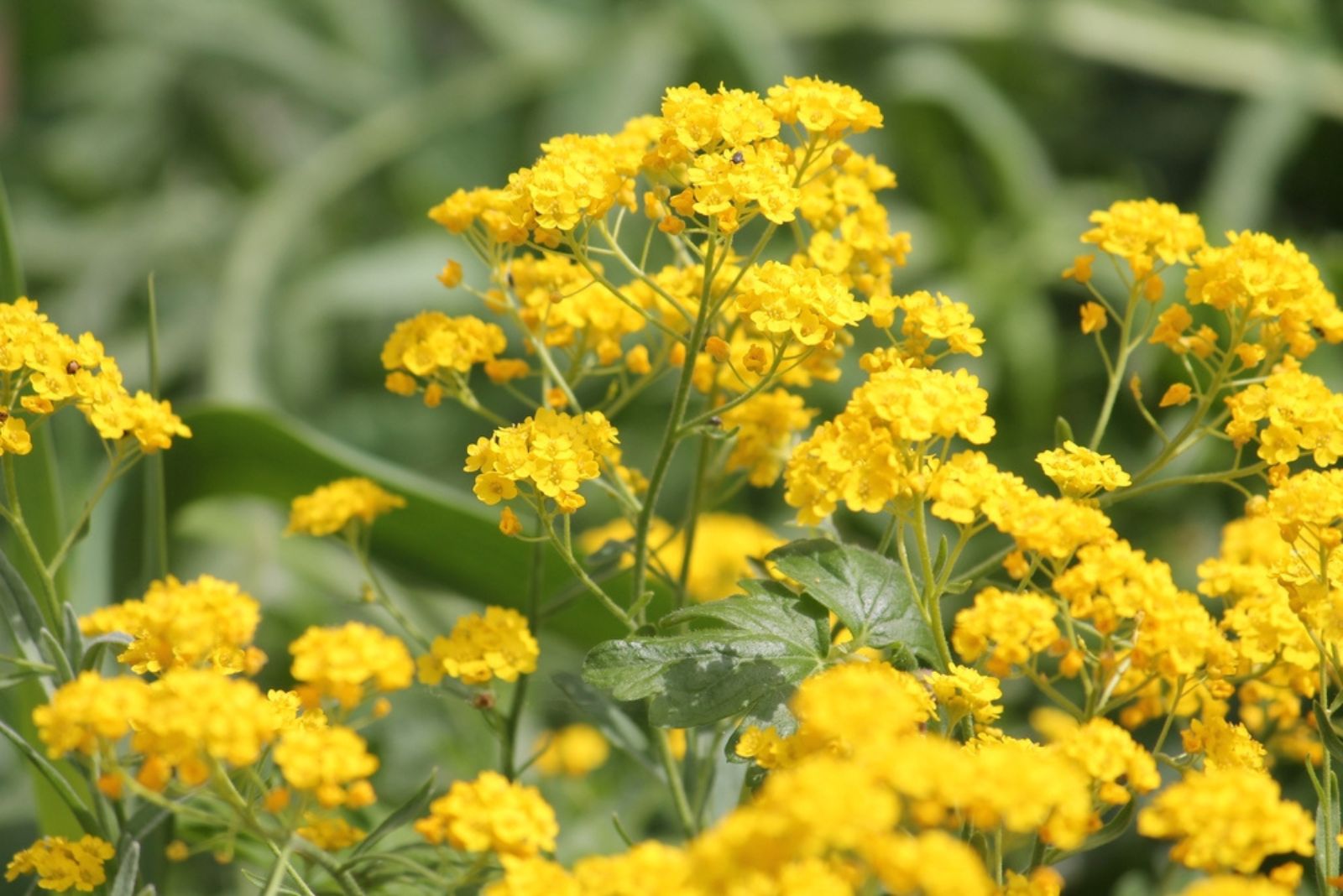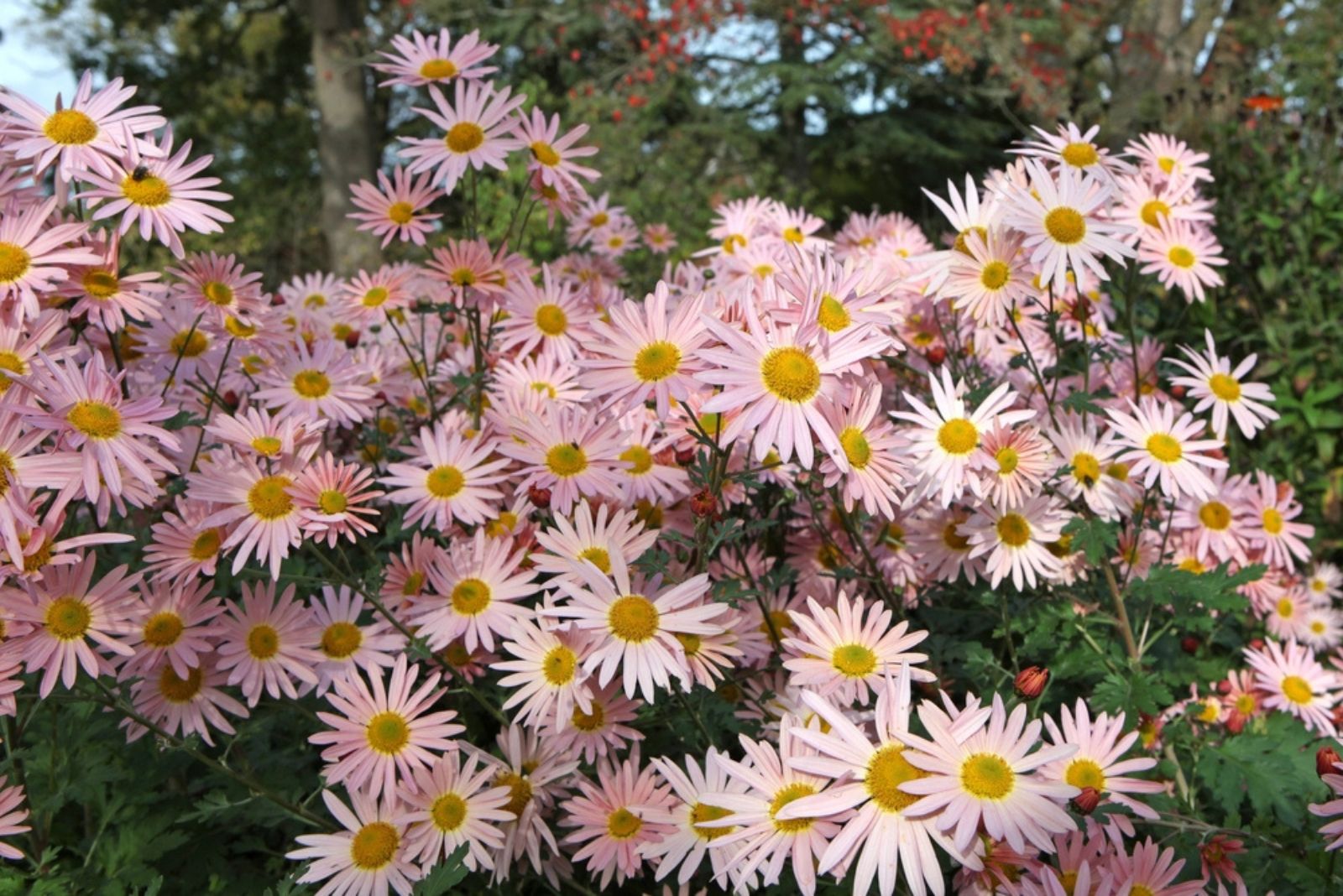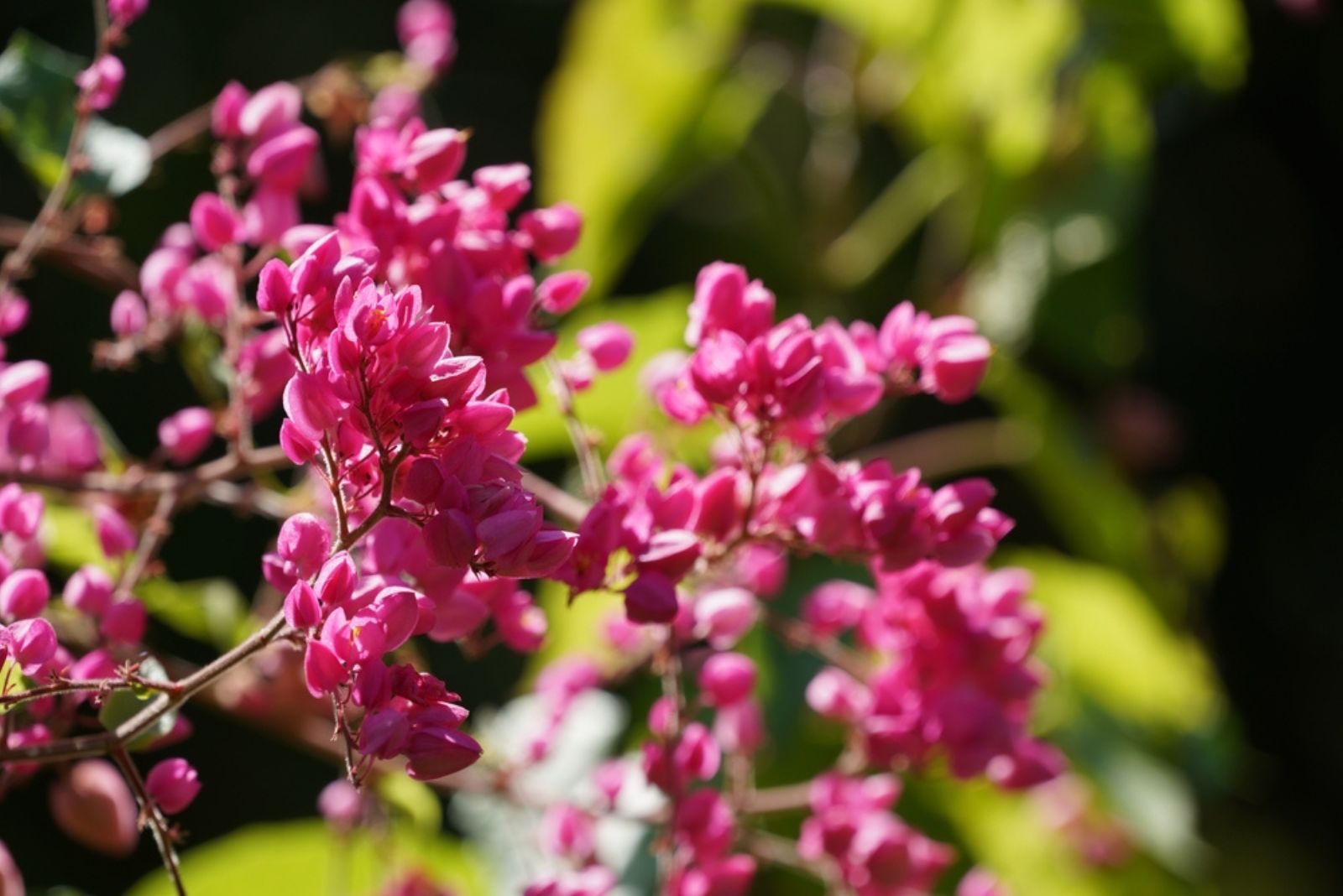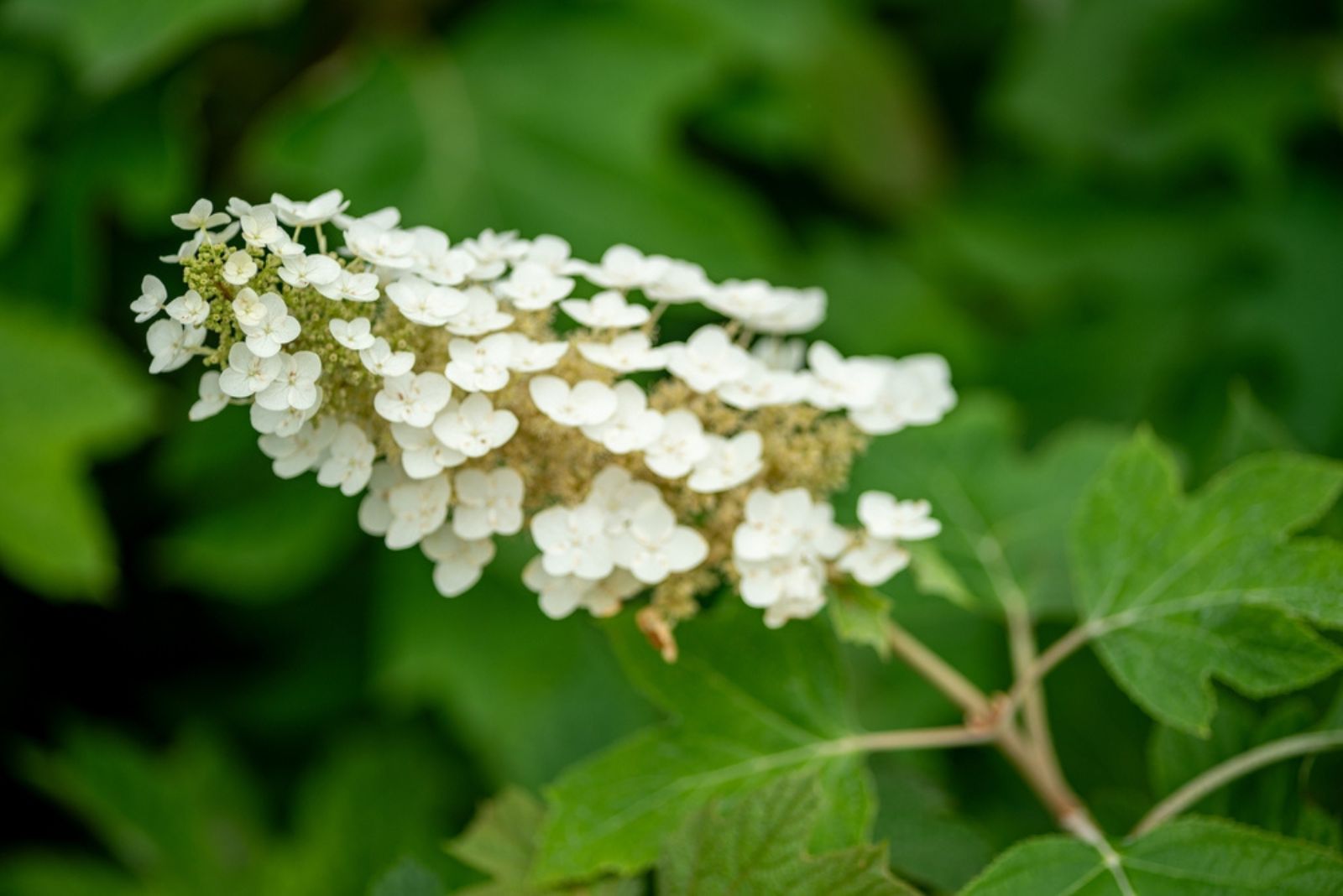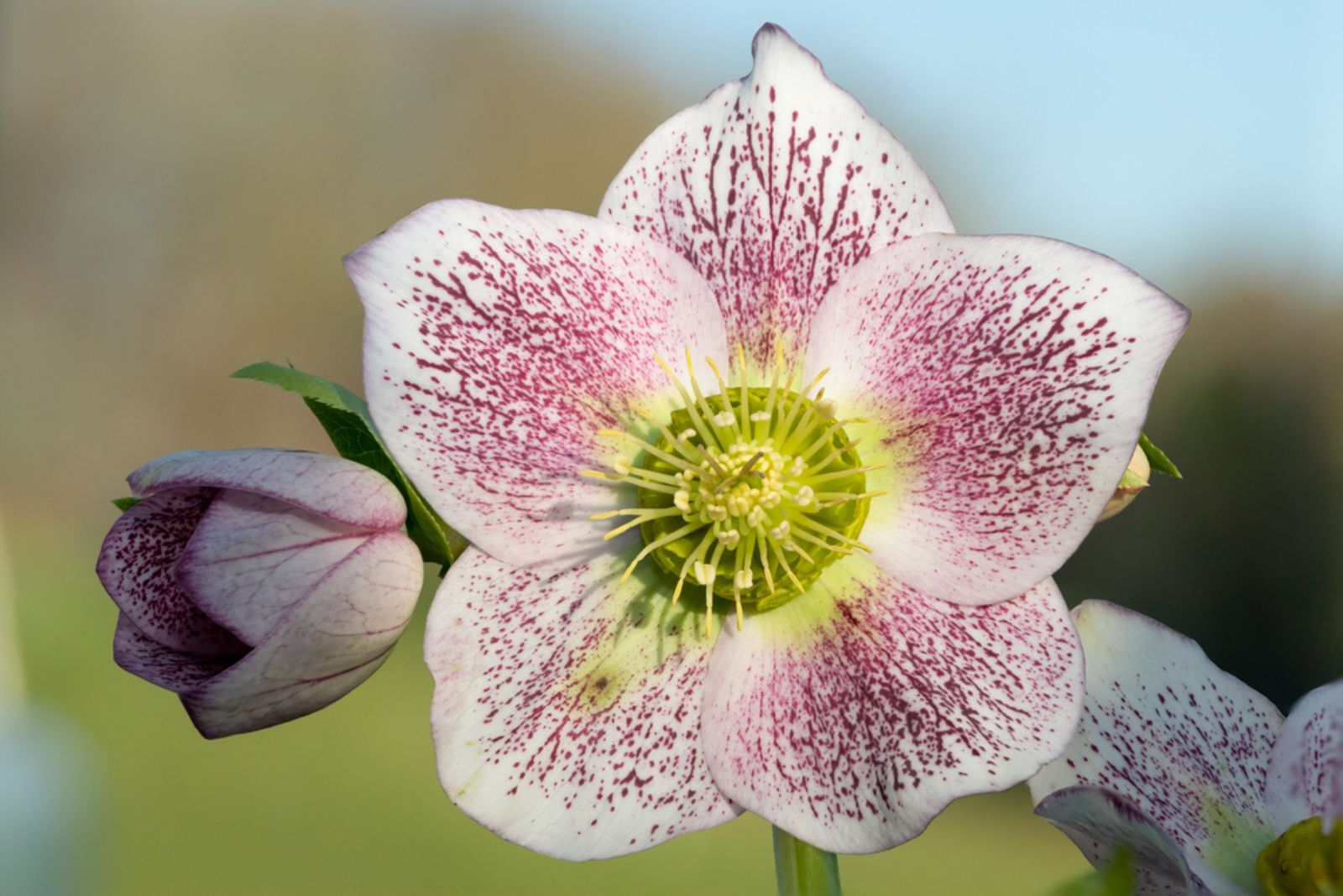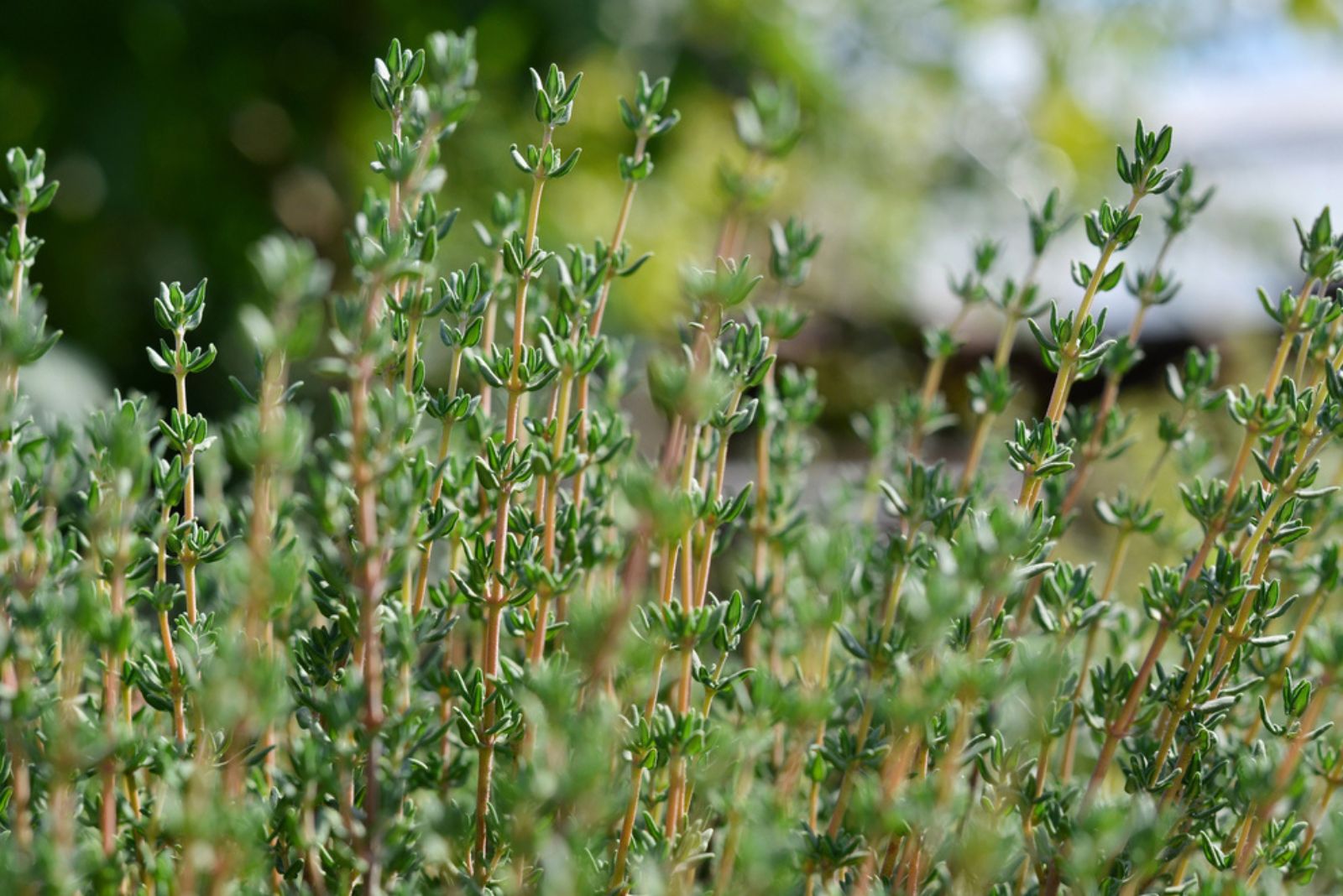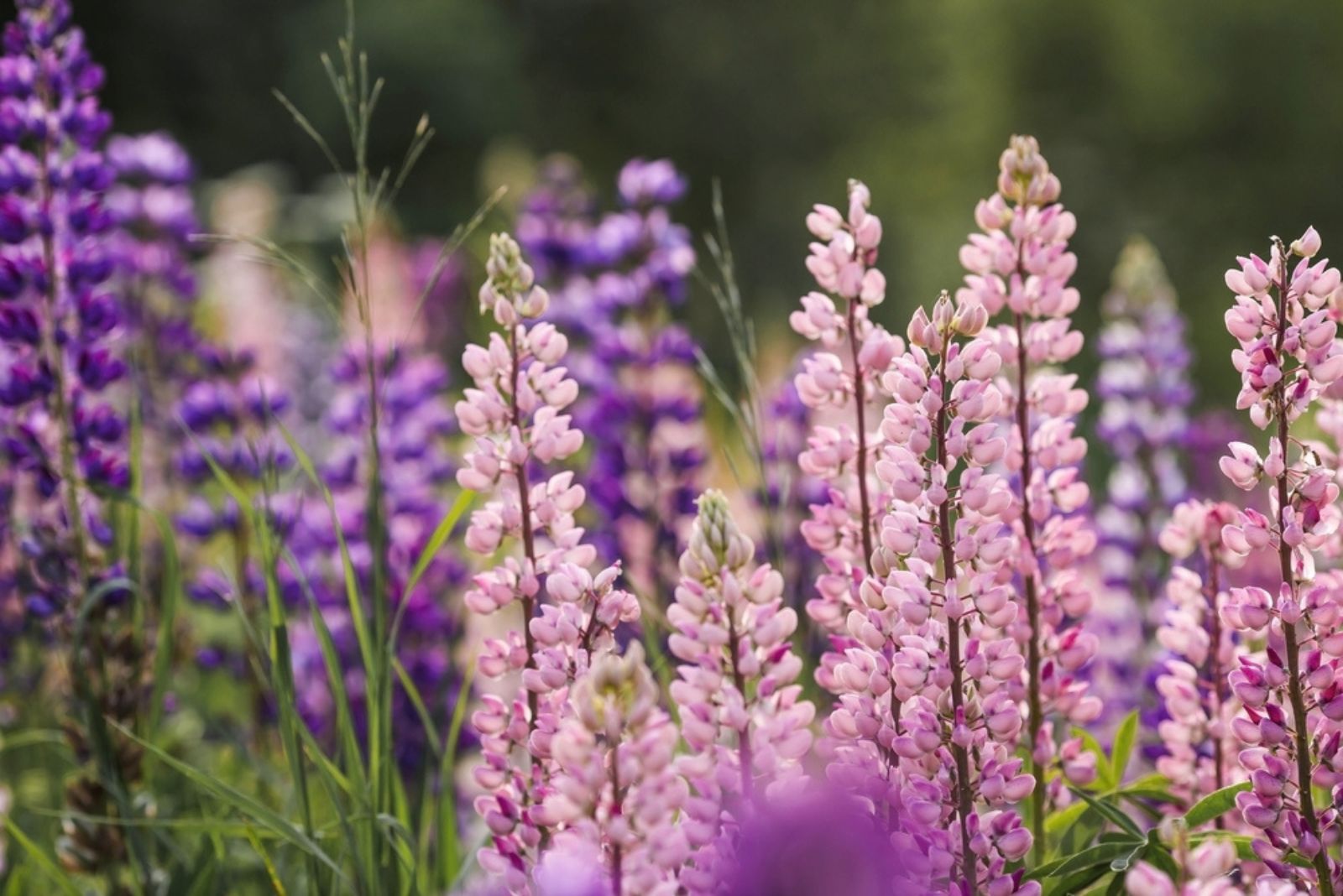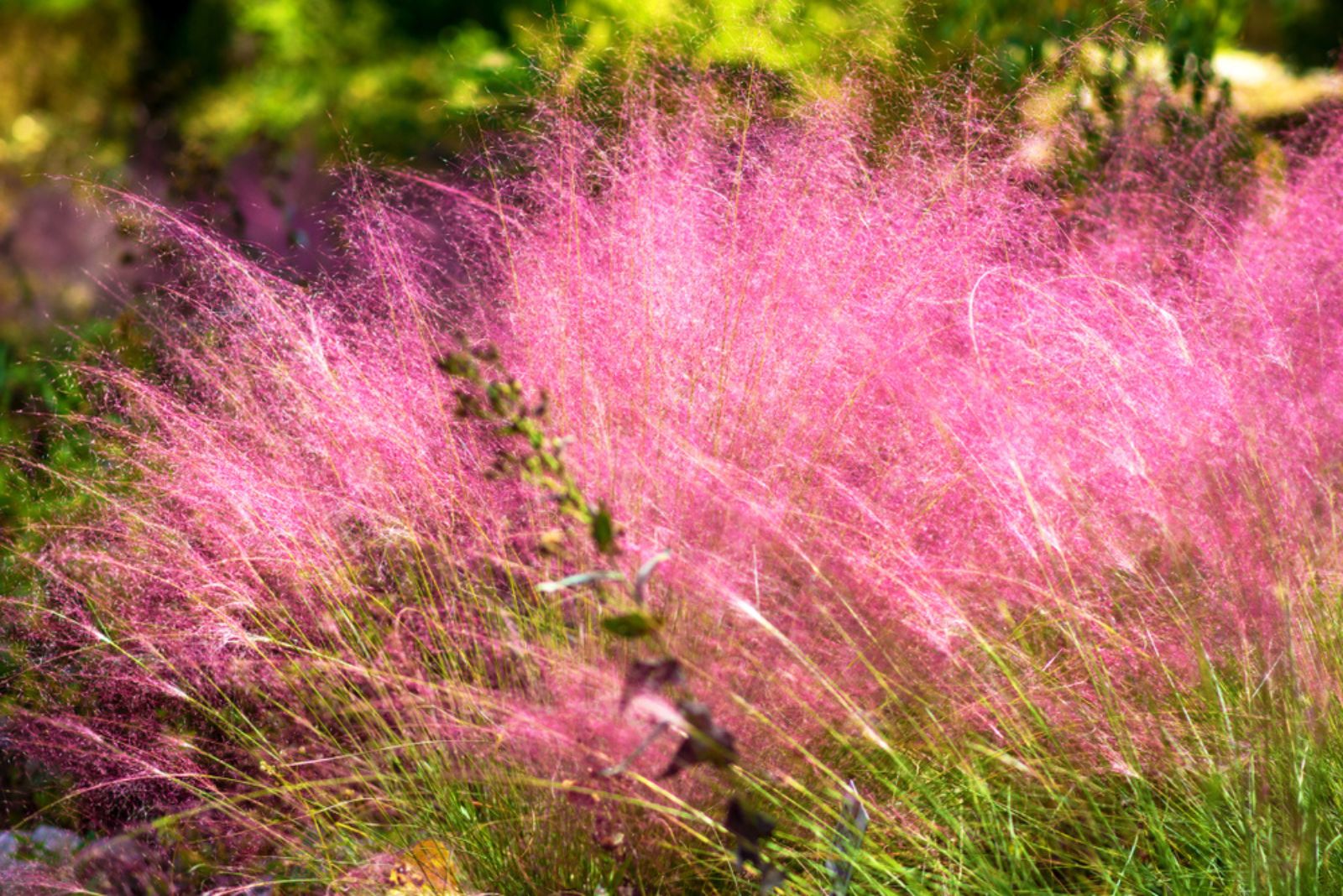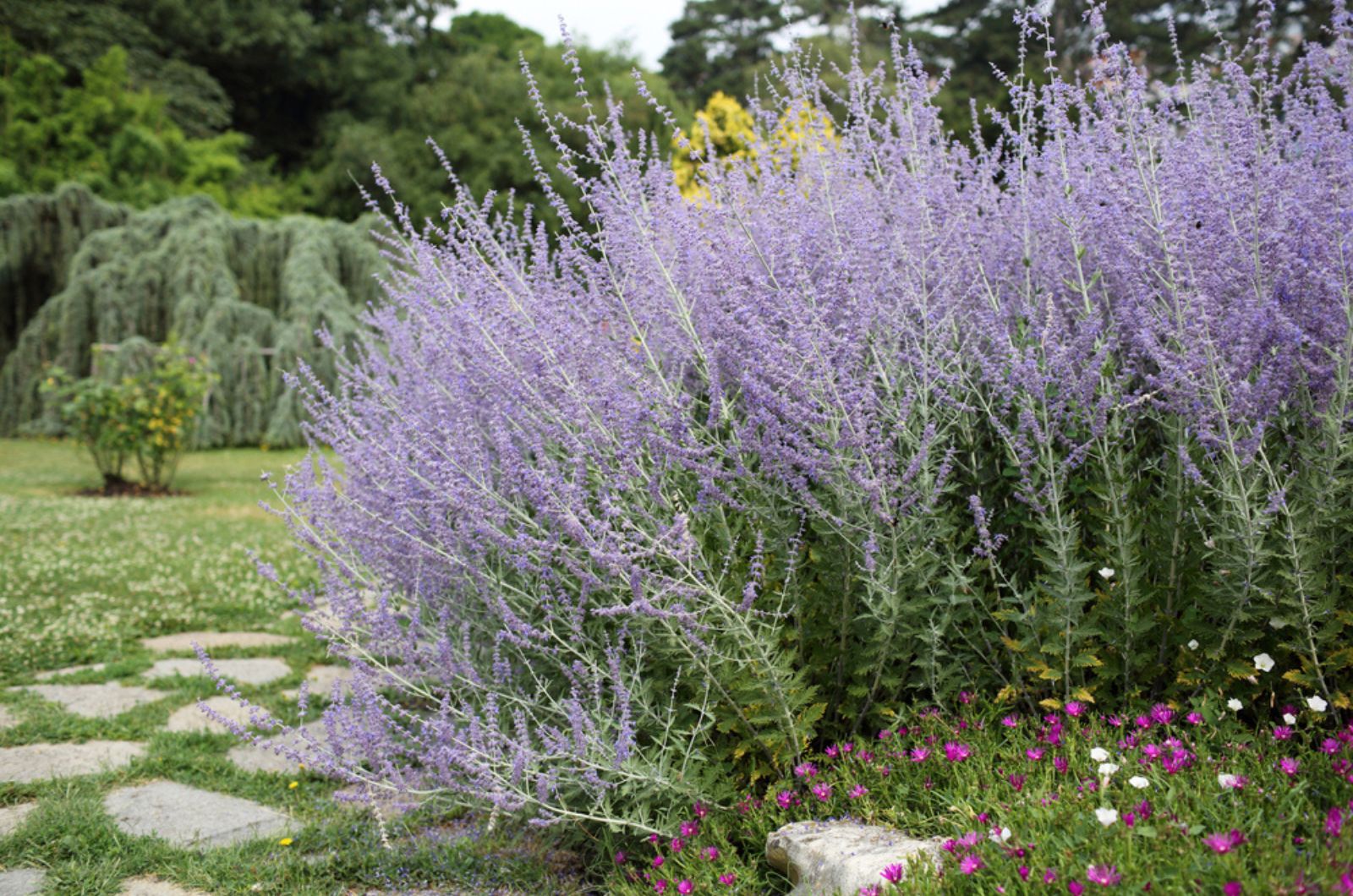As fall approaches, vibrant summer colors slowly start to fade. But what if I tell you that there are a lot of perennial plants that can thrive in cooler temperatures and changing weather?
That’s right, these hardy plants can bring lively colors and textures to your garden year after year, especially during the fall season. Fall perennials create a captivating scene with their fiery red, orange, and purple colors!
In this article, we are going to cover 30 beautiful perennials that are perfect for the colder months.
1. Astilbe
We are starting our list with the beautiful Astilbe. This herb produces beautiful feathery plumes of flowers that come in different colors, including pink, red, purple, and white. These flowers start blooming from late spring through early summer.
Not only are these flowers known for their appearance, but they also attract various pollinators and beneficial insects to the garden.
Astilbe plants thrive in areas with partial to full shade. They like well-draining and moist soil. It is important to water Astilbe, especially during periods of drought. You can add a layer of mulch to suppress weeds and retain moisture.
Also read: 21 Longest Blooming Perennials For A Never-Ending Season
2. Blue False Indigo
This is a native North American perennial that produces blue-purple flower spikes during mid-summer. Blue False Indigo is often placed at a focal point in the garden as they grow quite large and produce attractive foliage and flowers.
Blue False Indigo are plants that can grow in both partial shade and full sun. They prefer well-draining soil and some watering when young. Once established, Blue False Indigo is relatively drought tolerant.
3. Columbine
Here is yet another native wildflower that is perfect for perennial gardens. Columbine is known for its unique and delicate flowers that attract hummingbirds and other pollinators.
With their purple, pink, and yellow colors, along with hummingbirds flying around, your garden can look like a real-life fairytale!
Luckily, Columbine is a low-maintenance plant that can tolerate different soil types. You should water it regularly, especially during dry periods. Prune off dead leaves that have withered during hot summer days.
4. Cranesbill Geranium
Cranesbill Geranium, also often called Hardy Geranium, is a versatile plant that produces beautiful clumps of flowers in pink, purple, and white colors. These plants are perfect for rock gardens, borders, perennial gardens, and cottage gardens.
Both full sun and little shade are suitable for growing Cranesbill Geraniums. Geraniums grow best in a well-draining soil that is kept relatively moist. Geraniums are beautiful perennials that can be propagated from seeds, cuttings, or by division.
5. Lantana ‘Miss Huff’
Lantana plants are known for their remarkable heat tolerance and adaptability. They produce clusters of yellow, pink, and orange flowers.
These vibrant blooms are not only visually appealing but also attract butterflies with their nectar-rich rewards.
Lantana ‘Miss Huff’ is a plant that prefers growing in full sun and well-draining soil. It can withstand hot and dry conditions, making it an excellent choice for gardeners in warmer regions who want to start a butterfly garden.
6. Lavender
Lavender is a popular perennial known for its highly aromatic foliage and flowers. Its pale purple flower spikes are adored by pollinators!
While their distinctive fragrances attract lots of good bugs, they can also repel critters like deer and rabbits.
This low-maintenance herb does best in full sun and well-draining soil. Some watering is required during the initial lavender growth stages. Once established, lavender is drought tolerant and doesn’t require constant watering.
7. Peony
With its large, showy flowers, peonies will definitely catch everyone’s attention. They usually come in pink, white, red, and yellow. These are great for attracting pollinators, but also for keeping rabbits and deer at bay.
Long-lived peonies can be grown in either full sun or light shade. They grow best in well-draining soil that is watered adequately. Proper support may be needed to prevent the heavy blooms from bending or falling.
8. Shasta Daisy
Shasta daisy is a classic perennial that produces bright white flowers with prominent yellow centers. They bloom profusely during summer, thus making any garden look more cheery!
Shasta daisies can adapt to full sunlight and partial shade. You can even pinch the spent flowers to promote more blooming and encourage bushier growth. Regular watering is required during dry periods.
9. Speedwell ‘Georgia Blue’
This Speedwell cultivar is a low-growing plant that is often used as a ground cover. These plants have beautiful violet-blue flowers that bloom in spring and early summer. They are also resistant to deer and attract pollinators, adding beauty and biodiversity to your garden.
In full sun to partial shade and well-drained soil, Speedwell ‘Georgia Blue’ absolutely thrives! Once matured, it is drought-tolerant and needs little watering. This plant is a great choice for rock gardens or areas where low-maintenance ground covers are desired.
10. Vervain
Vervain, also known as Blue vervain, is a popular native plant that produces slender spikes of flowers in purple and pink colors. With its vibrant blooms from summer to fall, Vervain is a magnet for butterflies and hummingbirds
Verbena hastata likes full sun exposure although it can tolerate some shade. Well-draining soil and some watering will keep this plant happy and healthy. It is easily spread by runners or seeds, so it should also be thinned regularly.
11. Siberian Iris
Siberian iris is a low-maintenance perennial plant that is known for its colorful flowers. They usually bloom in late spring to early summer, making your garden look magnificent.
Although they may tolerate little shade, these plants do best in direct sunlight. The soil needs to be watered often to stay nourished. Irises can usually grow well in a variety of soil types as long as the soil is kept moist.
12. Purple Coneflower
If you are looking for a herb with purple flowers, then Coneflower is the perfect choice for you. This plant produces beautiful daisy-like flowers with cone-shaped centers. Pollinators absolutely adore them, too!
Purple Coneflowers prefer full sun and well-draining soil. Once established, these plants are relatively drought tolerant and require minimal watering. Deadheading spent flowers can encourage new flower production.
13. Lamb’s Ear
Lamb’s ear produces soft and fuzzy leaves that resemble a lamb’s ear, hence the name. On ascending spikes, the plant also bears tiny pink or purple flowers. It is ideal for borders and ground covers, along edges, or as a filler plant.
This unique herb can thrive in poor soil as long as it is well-draining. Removing dead leaves will reduce the risk of rotting since air circulation is improved.
14. Ice Plant
The ice plant, otherwise known as Delosperma, is a hardy perennial plant with succulent-like leaves and colorful flowers. These plants are often used as ground covers, but they are also ideal for rock gardens and borders.
Ice plant care is relatively easy – just make sure that these plants get plenty of sunlight. They also grow best in well-draining soils.
15. Coreopsis
Wildflowers Coreopsis are indigenous to the eastern and central parts of the United States. They produce feathery leaves and vibrant, daisy-like flowers that grow during the summer. Coreopsis is also one of the best heat tolerant perennial plants!
This sturdy wildflower loves full sunlight exposure, though it can tolerate some shade. Minimal watering is required since Coreopsis is relatively drought tolerant. Deadheading can induce more flowers.
16. Clematis ‘Jackmanii’
Clematis ‘Jackmanii’ is a popular flowering vine that produces numerous purple flowers during mid to late summer. This climber needs some type of support for growth – this could be arbors, trellises, or fences to cling to.
Make sure to water them regularly. Pruning is also necessary to maintain its shape and encourage healthy growth. In perfect conditions, these plants can survive up to 50 years.
17. Butterfly Milkweed
Here is yet another plant perfect for attracting butterflies and hummingbirds. Butterfly milkweed is a native perennial plant that features clusters of vibrant orange flowers that bloom from summer to early fall.
This plant is a primary host for the Monarch butterfly, although many other species of butterflies and bees are also attracted to their flowers.
Besides full sunlight exposure, this plant also requires well-draining soil to grow and thrive. Also, deadheading can encourage longer flowering. Once established, Butterfly milkweed doesn’t require as much watering.
18. Bleeding Heart
Bleeding Heart is a lovely perennial plant featuring heart-shaped flowers that dangle from arching stems. They start blooming in spring and early summer, filling out your garden with lots of pink hearts!
When it comes to the Bleeding Heart’s plant care, it prefers partial shade and moist, well-drained soil. Regular watering is necessary to keep the soil consistently moist. However, don’t overdo it as these plants can easily get overwatered.
19. Aster ‘Wood’s Purple’
This is yet another gorgeous perennial with showy purple flowers that bloom in late summer to fall. The flowers also have yellow centers that make this plant even more alluring. This Aster cultivar is a lot smaller than the rest – you won’t even have to prune it as much.
Aster ‘Wood’s Purple’ is a lovely flowering plant that can grow in full sun. They thrive in average, well-draining soil that is kept relatively moist. Regular deadheading can prolong blooming and maintain a nice and tidy appearance.
20. Alliums
Alliums are ornamental flowering plants known for their unique globe-shaped flower clusters that grow on tall stems. They come in different colors, including purple, pink, white, and yellow.
These plants have strong fragrances that will keep deer and rabbits at bay. However, a large number of pollinators will be drawn to your garden by these magnificent blooms. Alliums are excellent snake-repelling plants as well.
Alliums can grow perfectly fine in dry to slightly moist soils, but they thrive in fertile and well-draining soils. They also prefer full sunlight exposure for proper growth.
21. Black-Eyed Susan
Black-Eyed Susan is a vibrant wildflower known for its golden-yellow petals and prominent dark centers. The plant starts blooming from mid-summer to fall, creating a wonderful display in the garden.
Besides its aesthetic purposes, this flower also attracts bees and butterflies, thus improving the overall health of your garden.
This herb can grow in both full sun and moderate shade. To grow and develop, it requires well-draining soil as well as some irrigation when it is young. Drought tolerance is a trait of Black-Eyed Susan once it has been established.
22. Basket-Of-Gold
Here is yet another low-growing fall perennial that exhibits clusters of bright yellow flowers. As it is a small plant that grows rather densely, it creates a perfect ground cover.
Since it can also tolerate drought, this plant is ideal for rock gardens, along borders, or for xeriscaping.
However, your Basket-Of-Gold might benefit from some watering, especially during dry spells. This unusual plant grows best in full sun and well-draining, sandy soils.
23. Chrysanthemum ‘Hillside Sheffield Pink’
Chrysanthemum ‘Hillside Sheffield Pink’ is a hardy mum cultivar known for its delicate pink flowers that bloom during late summer and fall. This plant makes the garden look more lively while the rest of the flowers are slowly decaying.
It is necessary to water it regularly in order to keep the soil moist. In addition, deadheading can also encourage continuous blooming. Ideal settings for this mum cultivar would be borders and containers.
24. Coral Bells
Coral bells are famous perennial plants known for their alluring leaves and delicate blooms. They come in different colors, including green, silver, bronze, and purple. These shade-loving perennials are ideal ground covers.
Adequate watering is required to maintain healthy growth. These plants prefer moist and rich well-draining soil that is also slightly acidic (pH 6.0-7.0).
If you plan to grow Coral bells, then check out: 9 Fantastic Companion Plants For Coral Bells
25. Oakleaf Hydrangea
Oakleaf hydrangea is a gorgeous deciduous shrub that exhibits large oak-shaped leaves that match perfectly with clusters of white flowers. These plants start blooming from late spring throughout mid-summer.
Besides watering to keep the soil moist, pruning is also recommended to keep the plant nice and tidy. You can also add some fertilizers for hydrangeas to get the most out of them!
26. Lenten Rose
Lenten rose is a famous perennial often used for shaded gardens. These are hardy plants that can tolerate poor soil conditions and bad lighting. Regular watering during dry spells and mulching around the base of the plant can help retain moisture.
You won’t spend much time and energy on it, but you will get a lovely perennial that produces cup-shaped flowers in pink, white, purple, and green colors.
27. Thyme
Thyme is a common garden herb that produces aromatic leaves and delicate purple flowers. You won’t go wrong with any type of thyme, although Common thyme and Lemon thyme are the most popular cultivars.
Besides their culinary purposes, these plants are often grown for their aesthetics as they make perfect ground covers, borders, and herb gardens. Once established, thyme is pretty tolerant to drought.
28. Lupine
The lovely perennial flower known as lupine is distinguished by its towering flower spikes, which come in a range of hues such as pink, purple, blue, and yellow. During late spring and early summer, they begin to blossom.
Lots of beneficial insects are attracted to these delicate flowers, while deer and rabbits are repelled by them.
Lupines thrive in cooler climates. They prefer full sun to partial shade, and well-draining soil for proper growth. Some watering and deadheading will keep these plants happy and healthy.
29. Pink Muhly Grass
We also have to mention Pink Muhly grass, a perfect perennial for the fall! If you love pink, then you should definitely consider planting this ornamental grass. Pink Muhly grass produces feathery plumes of pink flowers that appear in late summer and fall.
Although it may tolerate little shade, this beautiful grass thrives best in direct sunlight. But it also adjusts to unfavorable soil conditions. Pink Muhly grass can grow fine in dry conditions.
Also read: The Best Pink Muhly Grass Companion Plants: All The Info
30. Russian Sage
Russian sage is a popular sage cultivar that produces silvery-gray foliage and tall spikes of lavender-blue flowers. The blooming starts in mid to late summer, attracting a lot of pollinators and beneficial insects.
Well-draining soil and full sun will keep Russian sage happy. It is a drought-tolerant plant that can withstand dry and hot conditions. Minimal watering is necessary once established. Pruning can help maintain its shape.

